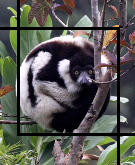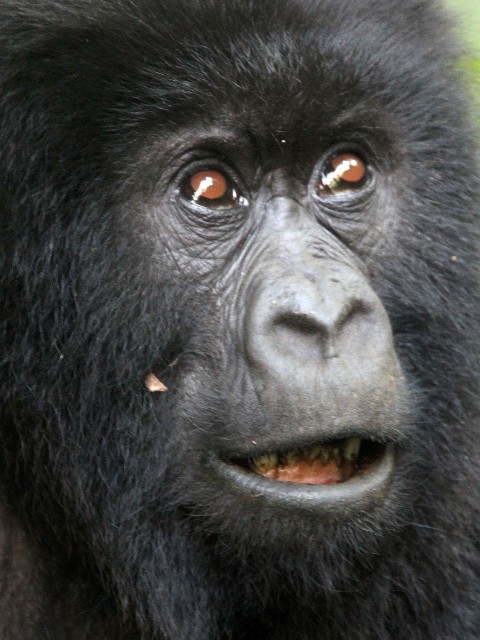
Beautiful
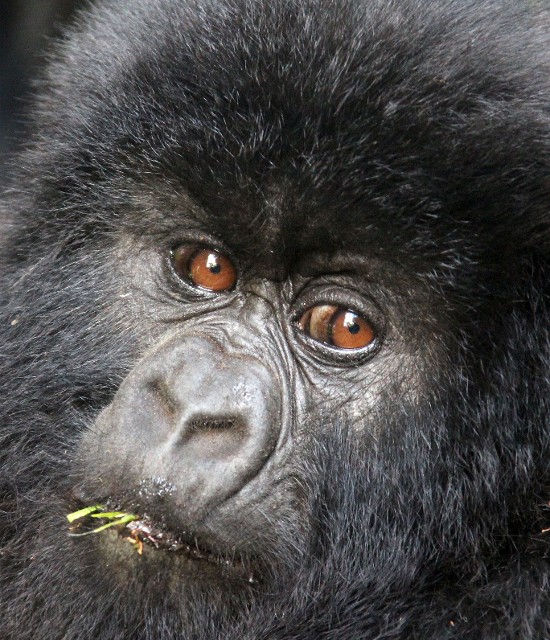
Amahoro young one...
***
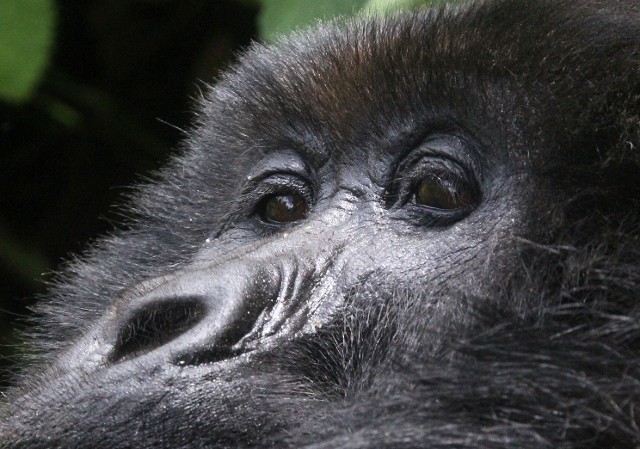
Amazing...
***
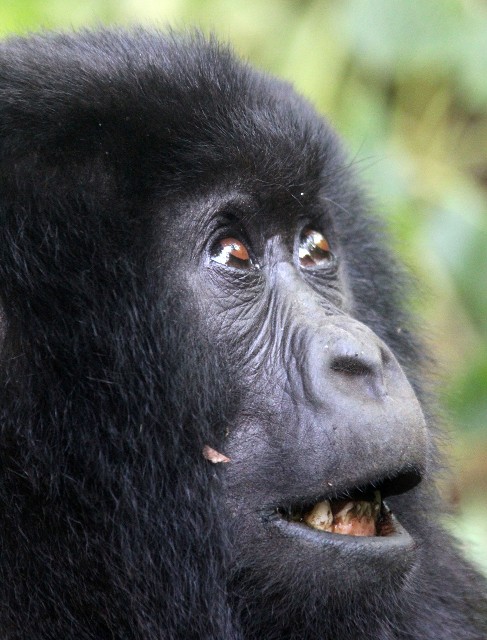
Wanna play?
***
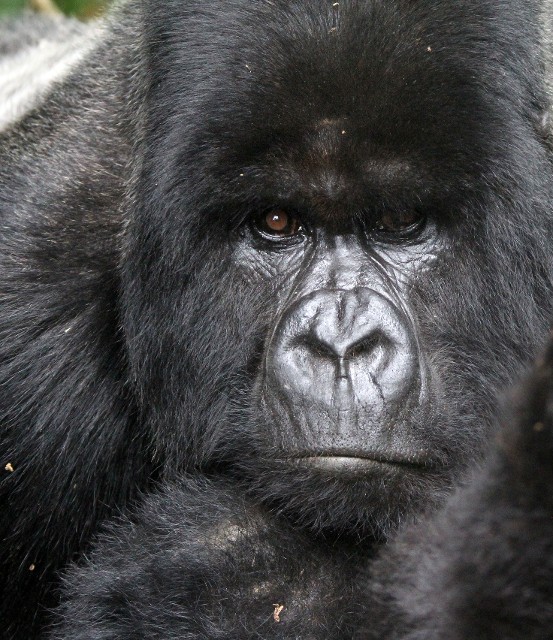
Oh that stare...
***
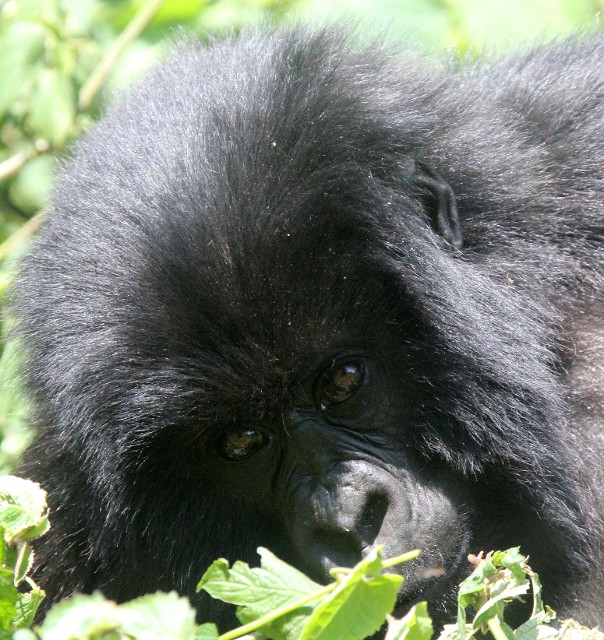
Hello!
***
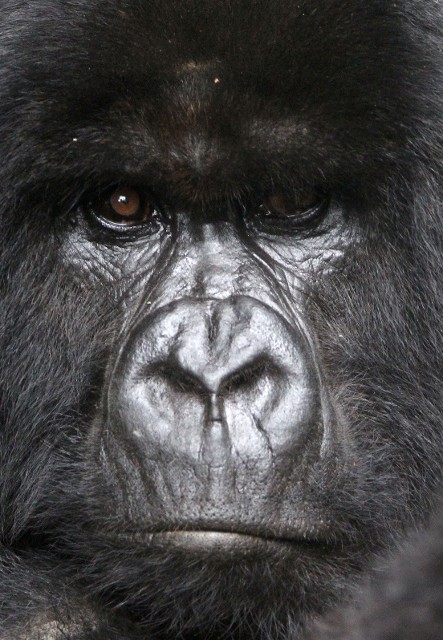
Spectacular
***
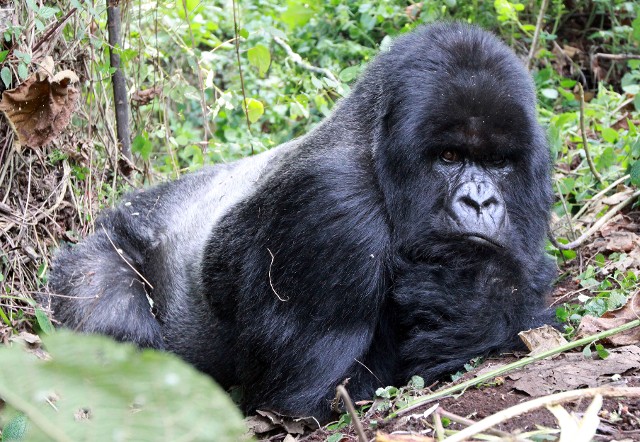
Relaxing in the shade...
***
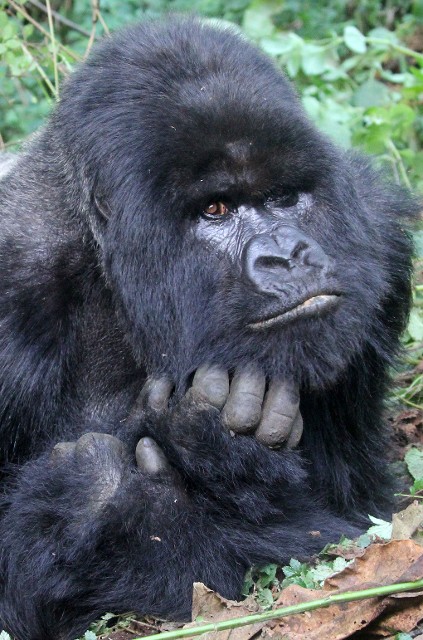
Hmmm...
***
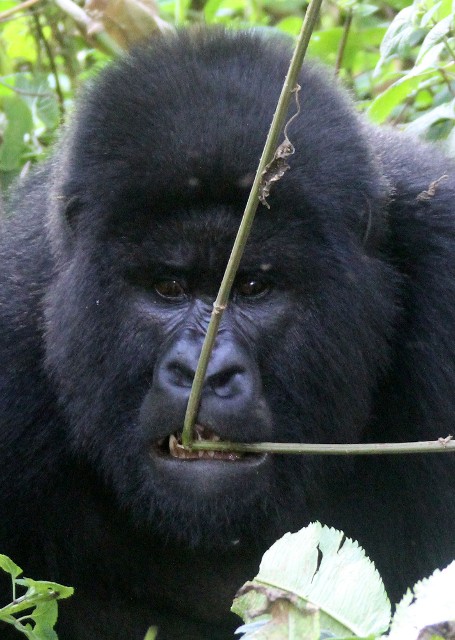
"I wonder how this tastes..."
***
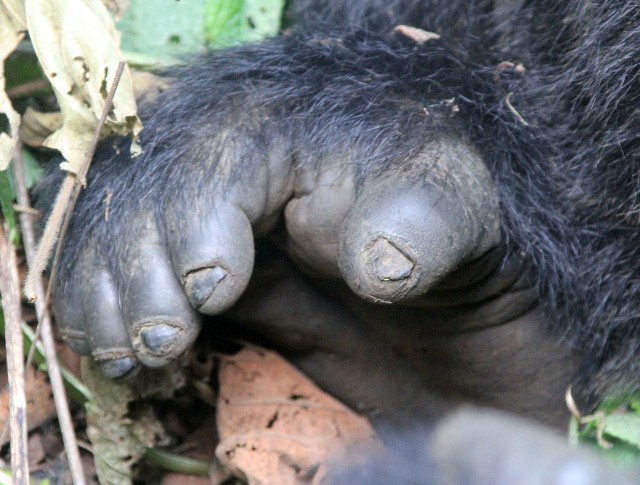
Opposable toes...
***
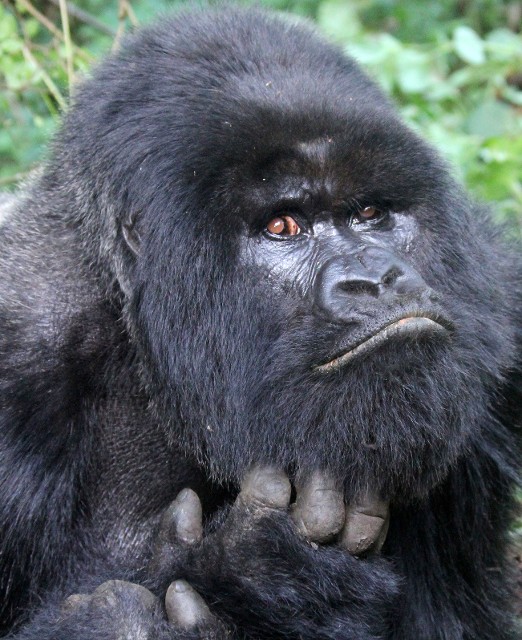
"Hmmm...Let me think about that one for a bit..."
***
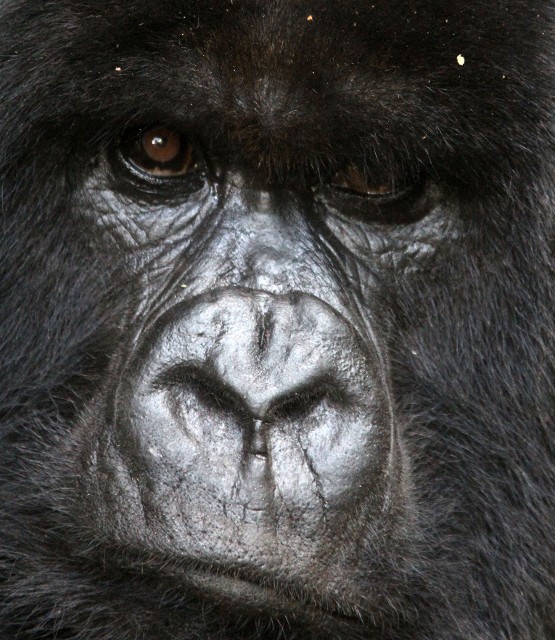
Never get tired of this face...
Check out our Youtube videos of the Amahoro Group
And another!
***
We had an opportunity to explore some of the surrounding countryside that afternoon. We traveled up to the Virunga Safari Lodge and took advantage of its stunning views of the region and the two lakes, Ruhondo & Bulera. There were some great birds on the hill and we got our first and only glimpse of a Zebra Mouse, one of the only rodents for the trip, all while enjoying some nice cool drinks from their garden overlooking the entire region.
***
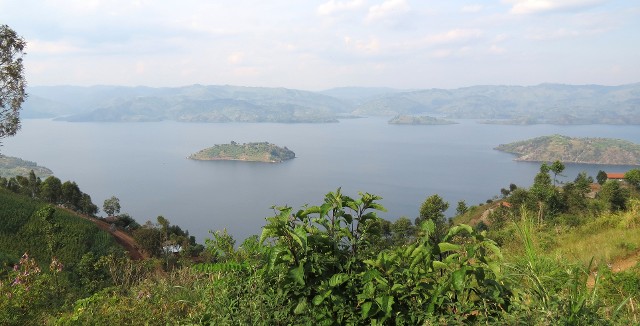
Lake Ruhondo as seen from the Virunga Safari Lodge.
***
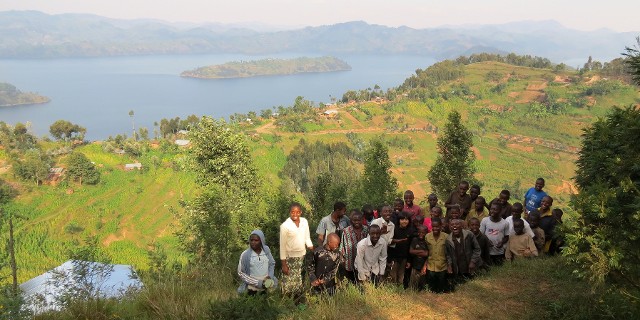
Lake Burera and our new friends seen along the nature trail of the Virunga Safari Lodge.
***
Check our or Pbase Galleries for More Images of our Gorillas!
***
***
Nyungwe National Park
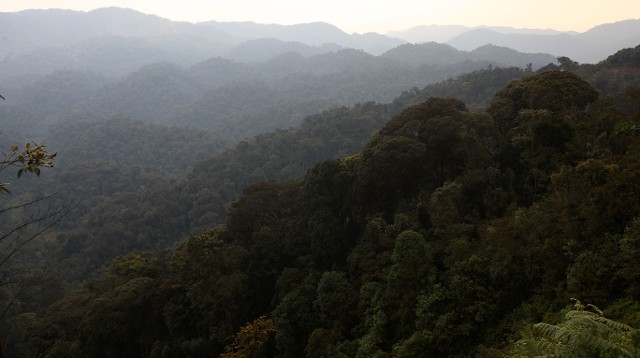
The vast and spectacular Nyungwe Forest in southern Rwanda basically right on the Burundi border.
***
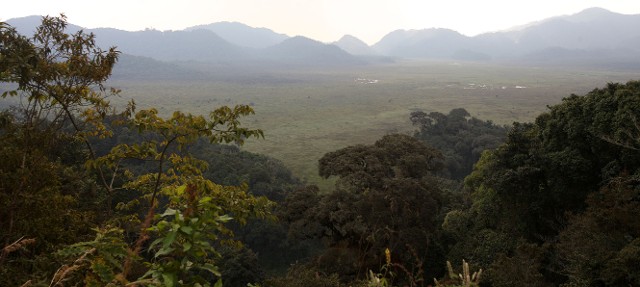
The Kamiranzovu Swamp in the core area of Nyungwe. This is one of the last remaining habitats of this type left in Africa.
***
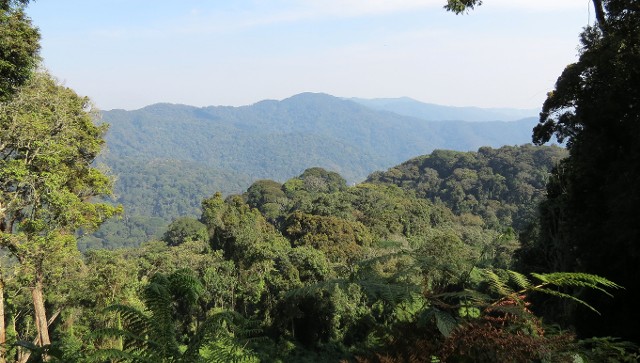
The view of Mount Bigugu and the montane Podocarpus forests of Nyungwe.
***
The next day we headed to the southernmost edge of Rwanda, to experience Nyungwe National Park. All I knew of this place came from Jon Hall’s report and our goals were about six species or so of primates. I told Gaston and the park ranger upon arrival that our main goal was the very rare Owl Monkey, and I could tell in the way they were hemming and hawing, that there was no way in hell I was going to get to see this species. The stories ranged from, “There are no trackers and no one has seen the monkeys in weeks…” to “It takes over 8 hours to reach their location and there are Burundian rebels there and you will be killed…” to “It only takes about three hours to reach the area and you are welcome to try to find them but you won’t….” to “The road there is so bad that you won’t make it…” I finally became resigned to the fact that this primate will not grace my species lists this trip…But it is a very cool species and it will remain high on my wanna-see list for sure.
Nyungwe is arguable one of the most spectacular rainforests I have ever experienced. Once we trekked deep in to the forest on “The Pink Trail”, which initially seemed, based on the park map, like a gentle walk that we could do in a couple restful hours of light trekking, ended up being a ten-kilometer (half straight down and half straight up – over 1500 meters climbed!) hike from hell, I soon gained an appreciation for what Rwanda had lost. The forest was amazing. The vegetation was spectacular, with ancient African Mahogany trees and giant tree ferns. And the wildlife was profuse. Rwanda was once covered with this forest and now the only spot that remains is Nyungwe, nothing more. As far as I can tell there is not one square millimeter or natural vegetation or rainforest left ANYWHERE in the entire country!
***
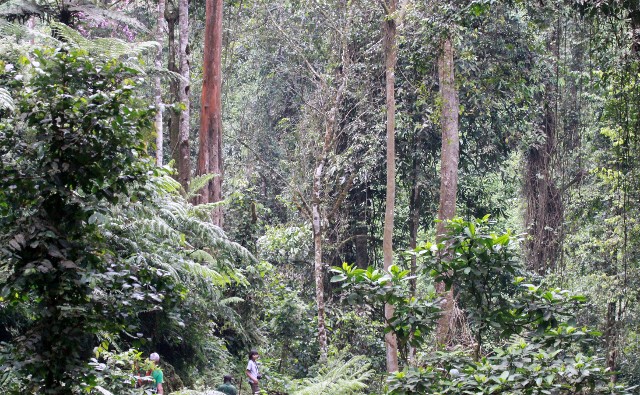
The forest in Nyungwe was primary in many locations. African Teak (the brown-bark species in this image) is one of the most endangered species of tree in Africa.
***
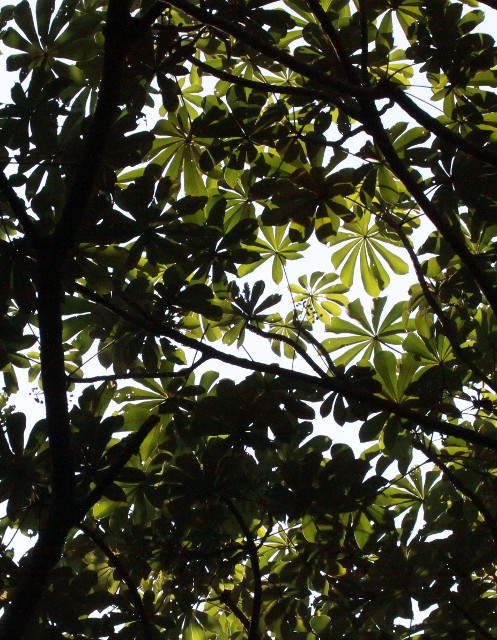
The nearly completely closed canopy of Nyungwe's primary forest made for some dark walking!
***
For the three days we were to spend in Nyungwe, Gisakura Guest House was to serve as base camp. Nicely located next to a riverine-forest gallery, populated by Angolan Colobus Monkeys, we were entertained daily by the antics of this amazingly beautiful primate, who often woke us in the morning as they swung through the trees just outside our windows. There was also a well-documented Mona-Red-tailed Monkey hybrid that showed itself once near the end of our stay there.
***
Angolan Black & White Colobus Monkey
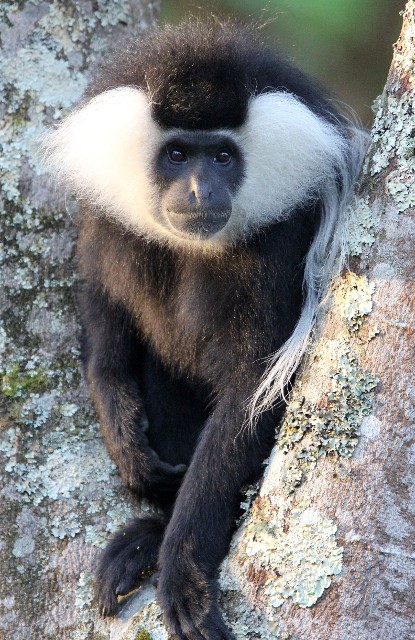
Angolan Black & White Colobus Monkeys were very common in the forest gallery near the Gisakura Guest House and tea plantations.
***
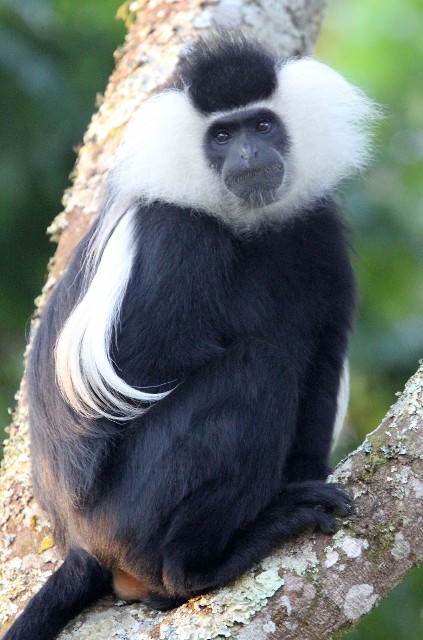
Truly a spectacular primate.
***
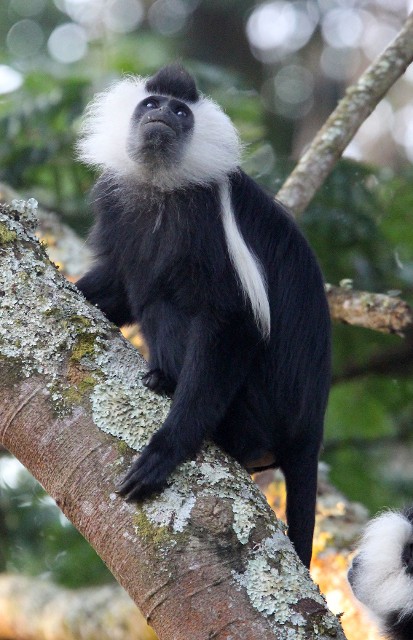
Angolan Black & White Colobus Monkey
***
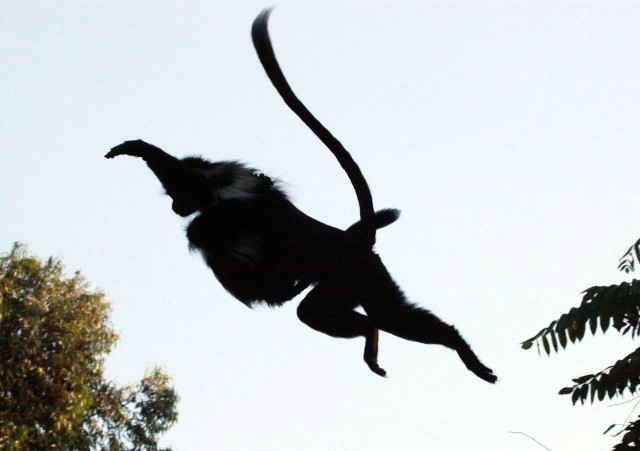
For three days we had the priviledge of watching these primates in the forest directly outside our lodge.
***
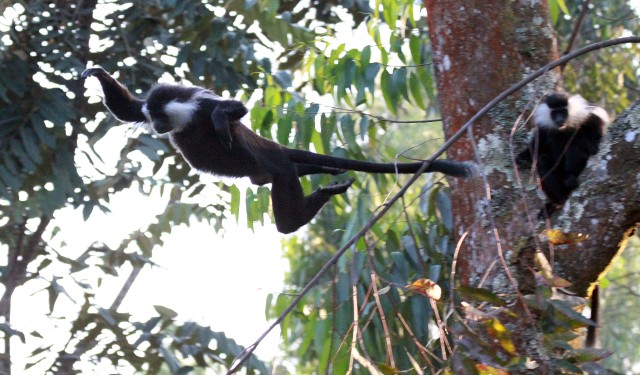
Going for it!
***
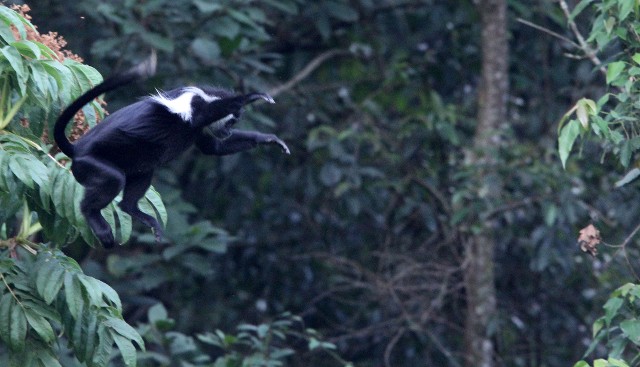
Angolan Black & White Colobus Monkey at Gisakura.
***
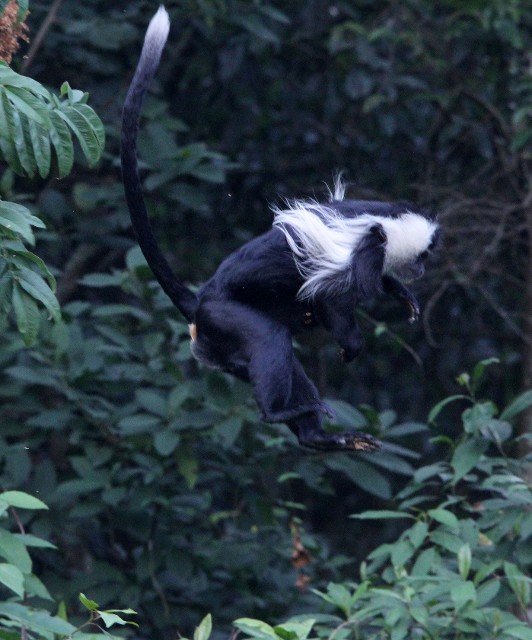
Angolan Black & White Colobus Monkey at Gisakura.
***
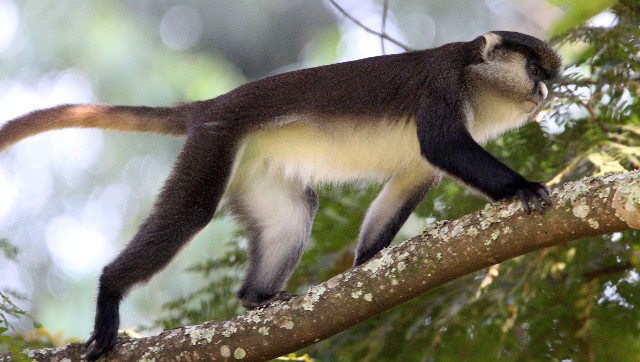
This lone Mona-Red-tailed Monkey hybrid that hangs around with the Angolan Colobus monkeys is actually fairly famous in the literature.
***
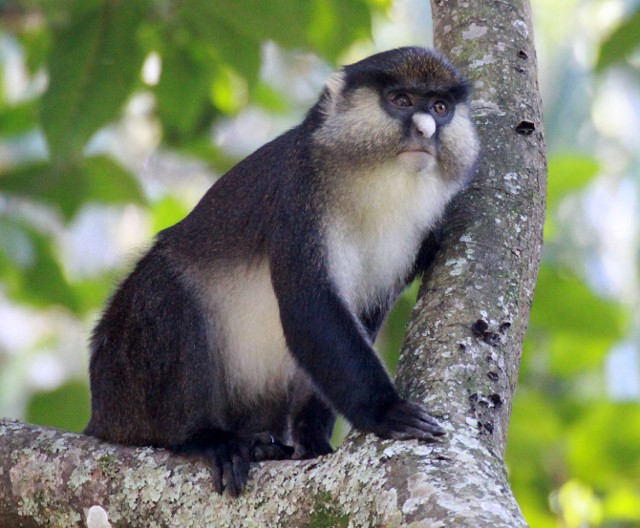
He waited to our last day at Gisakura to show himself.
***
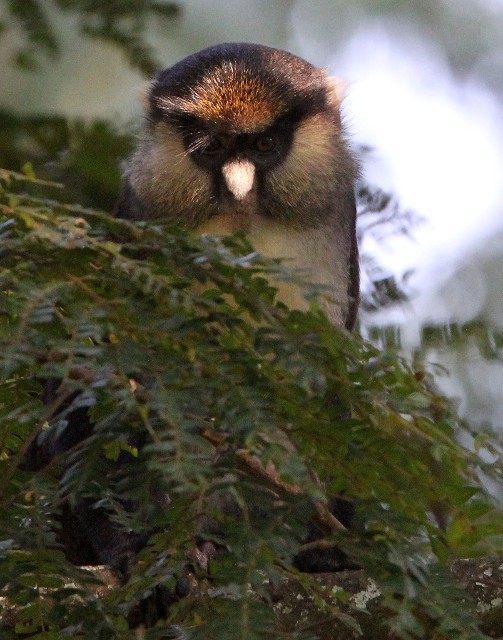
I love that nose!
***
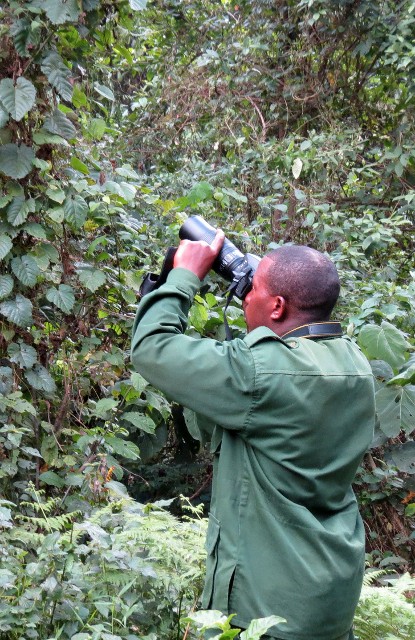
I enjoy watching our trackers and guides get in to photographing what we are seeing. I often find these folks more apt to work extra hard to get you the targets!
***
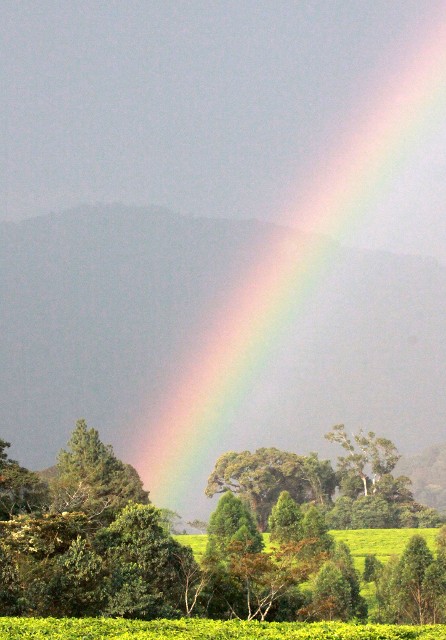
Gisakura Tea Estates served as our base of operations while in Nyungwe. As beautiful as this area was, one could only think of the amount of rainforest that had to be sacrificed for this crop, most of which was old at prices below the cost of production...
***
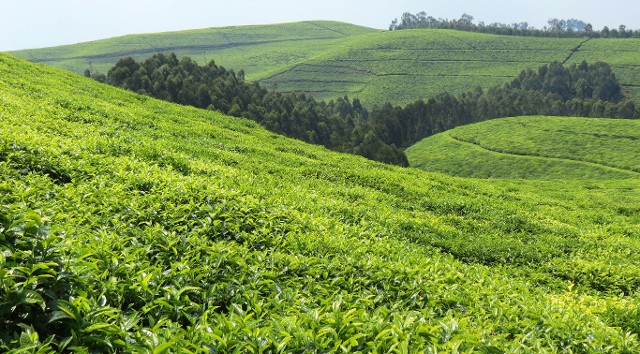
Gisakura
***
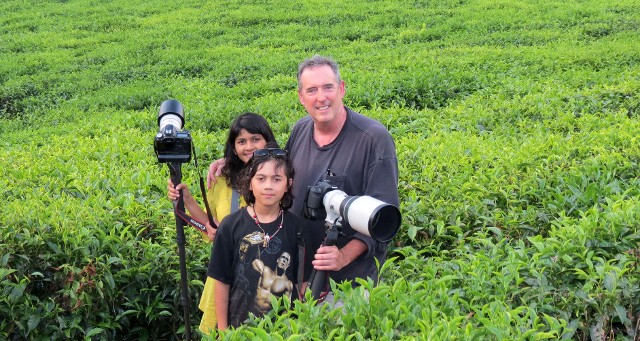
The Smith family in the tea terraces of Gisakura.
***
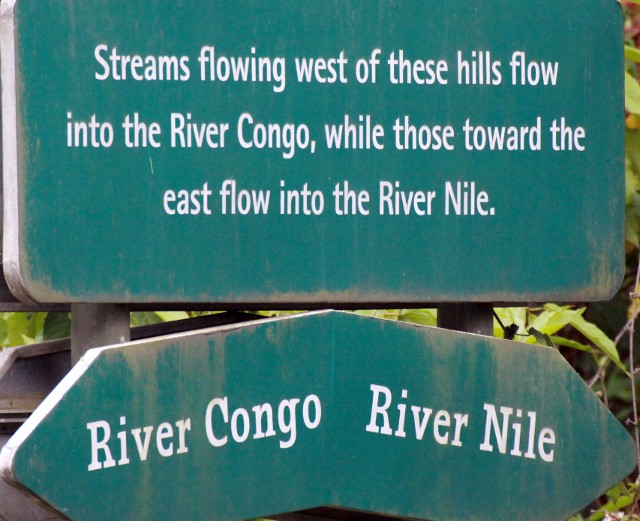
This sign is pretty much self-explanatory.
***
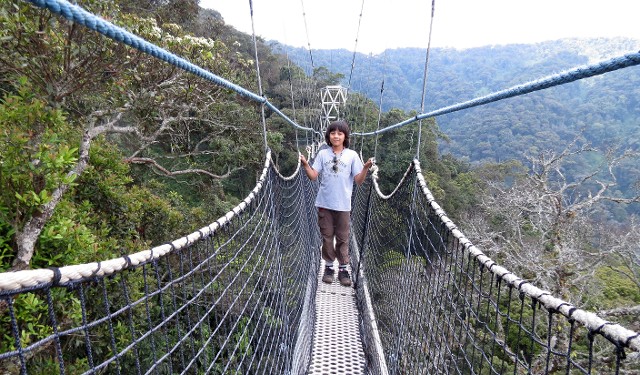
Cokie enjoyed the canopy walk at Nyungwe. Due to the $75 per person price tag, Som and I opted out...
***
Aside from trekking the Pink Trail, and some other smaller trails, we basically coursed the roadway of the park traveling back and forth spotting the target species. The Pink Trail gave us excellent views of at least 200 Blue Monkeys, which are evidently now considered their own species, no longer lumped with the Silver Monkey. Along the main road, we had constant and great views of several dozen or more L’Hoest’s Monkeys, which seemed to be around every corner! And what a gorgeous primate.
***
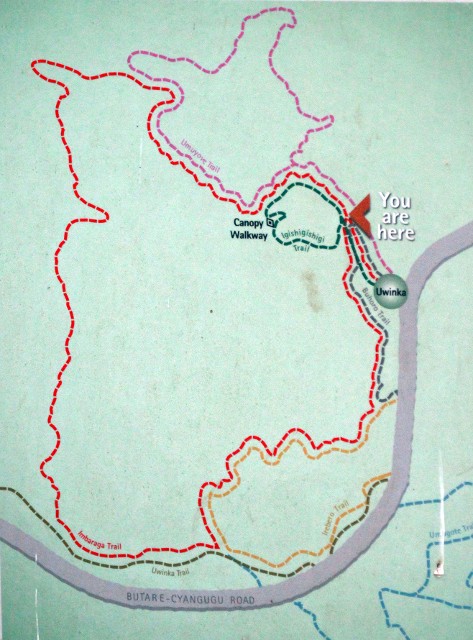
The infamous "Pink Trail".
***
Blue Monkey (Cercopithecus mitis)
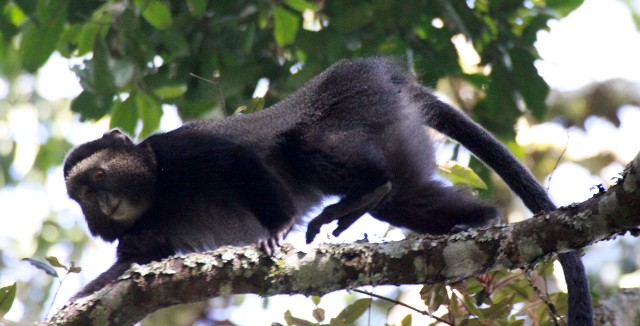
Cokie spotted our first Blue Monkeys (Cercopithecus mitis) on the Pink Trail of Nyungwe. What started out as a couple stragglers, ended up being a super-group of well over 200 monkeys!
***
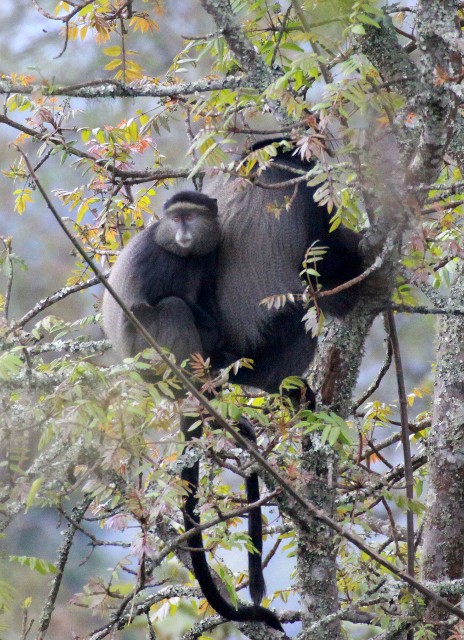
Blue Monkey couple near the main road of Nyungwe.
***
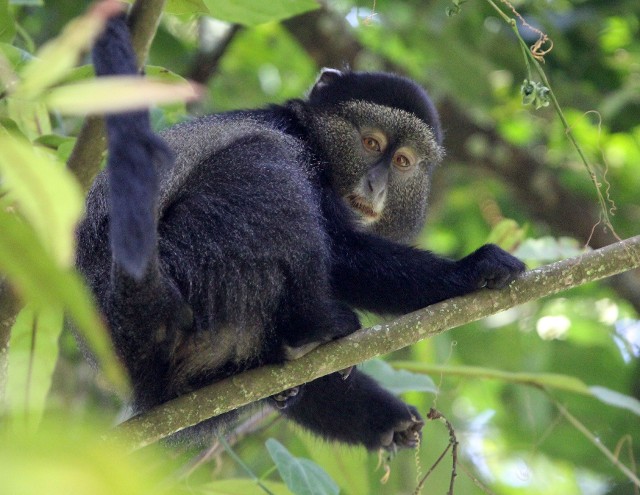
Cokie's first Blue Monkey! Nice spot little dude!
***
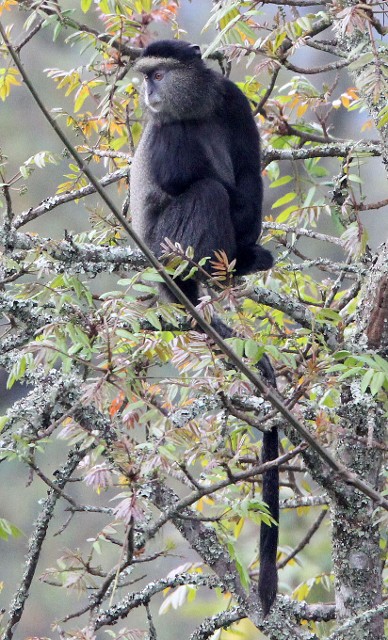
Blue Monkey (Cercopithecus mitis)
***
L'Hoest's Monkeys (Cercopithecus l'hoesti)
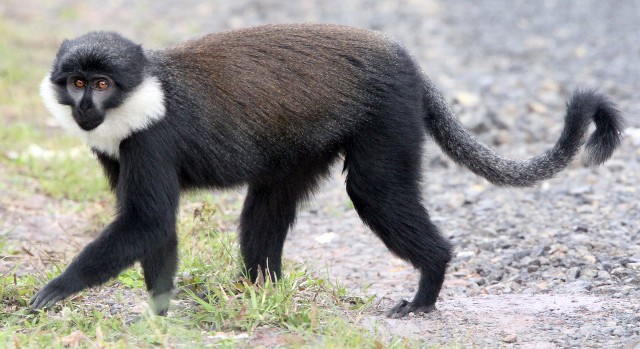
L'Hoest's Monkeys (Cercopithecus l'hoesti) were by far the most commonly spotted primate in Rwanda. Basically on the road around every bend (or so...) in Nyungwe, their "question-mark" tail is what gives them away at a distance.
***
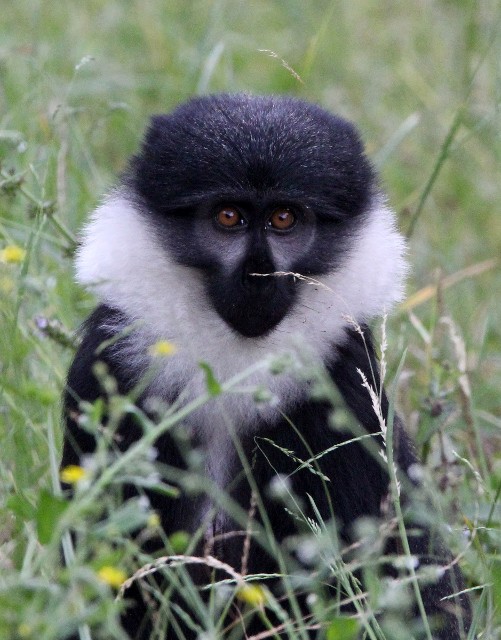
L'Hoest's Monkeys (Cercopithecus l'hoesti) young one.
***
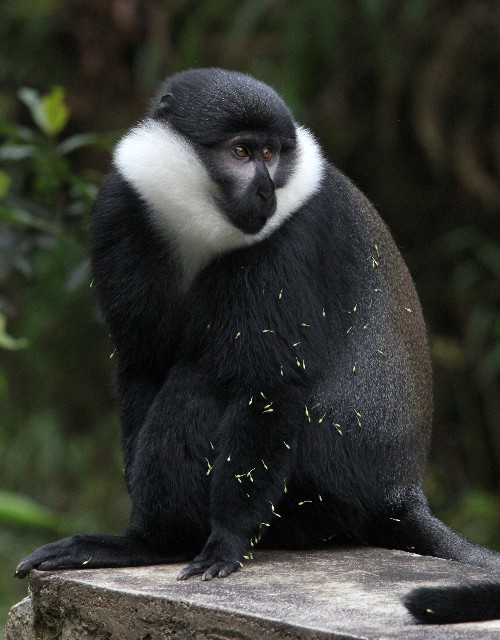
L'Hoest's Monkeys (Cercopithecus l'hoesti) along the road in Nyungwe.
***
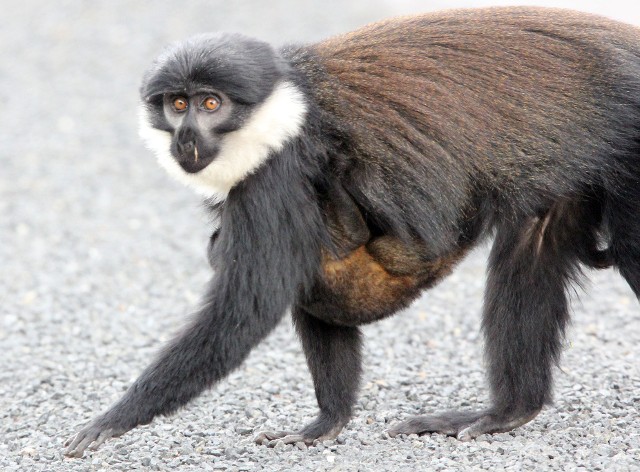
Mom and her little one!
***
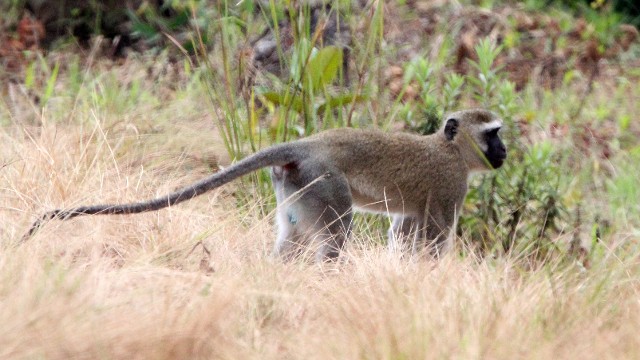
There are 13 species of primates in Nyungwe, and we were able to see most, including a few of the local Vervet Monkeys.
***
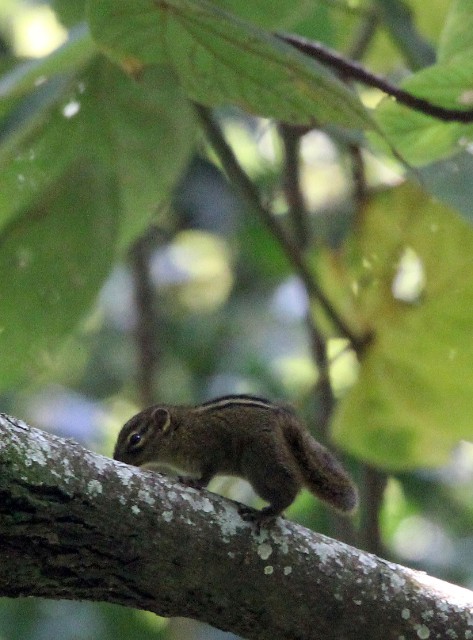
We did manage to spot several species of rodents in Nyungwe, but only these little Boehm's Squirrels (Paraxerus boehmi) stayed put long enough for a quick image.
***
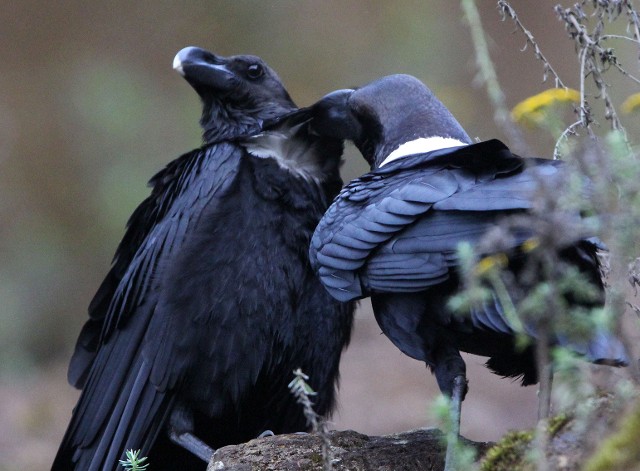
I was very happy to see these White-naped Ravens in Nyungwe. We saw several pairs, and they always seem to be in pairs. These two were particularly affectionate and romantic...
***
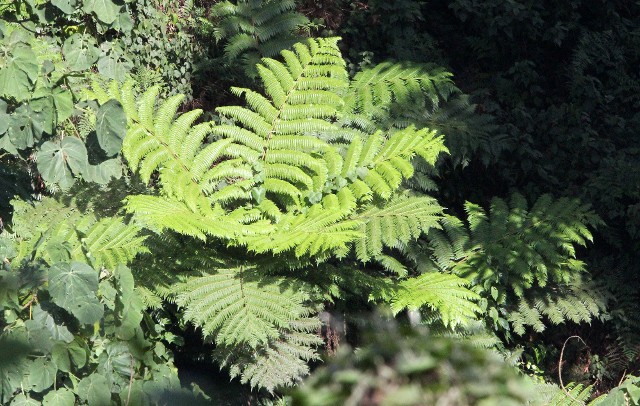
Tree ferns in the Nyungwe Rainforest.
***
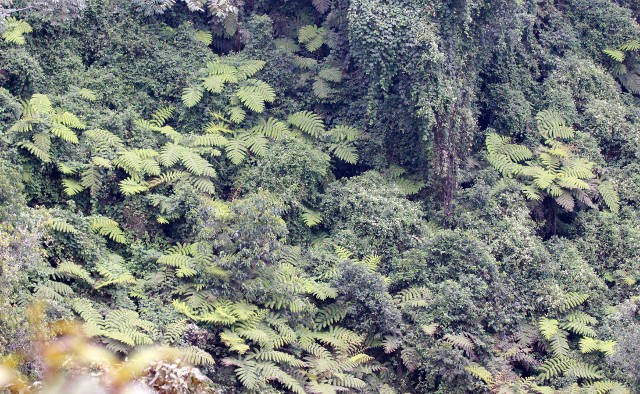
Vast tree fern forests in Nyungwe.
***
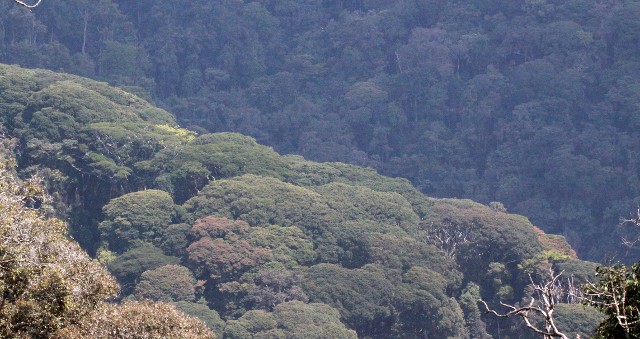
The primary forest's canopy in Nyungwe.
***
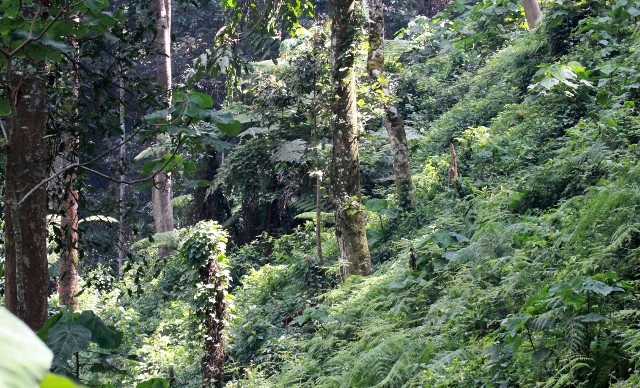
Nyungwe is an outstanding example of Central African rainforest, of which there is very little remaining.
***
One of our main goals, Dent’s or Mona Monkeys, seemed to be out of reach, though. Their only “guaranteed” location was near the Oyamudongo forest, a couple hours to the west. Still part of the national park, the Oyamodongo Forest was home to the Chimpanzee groups, and since Cokie was not allowed to go Chimp tracking by international agreement, we were not allowed to even visit that part of the park! Bummer! Well that was until I told Gaston that, since we had an entire day to fill, and had seen all of our other target species, I had decided to go try for the elusive Owl Monkey. I suspected that would get things going in the Mona’s favor.
Well, sure enough, Gaston did some sweet talking to someone in the HQ and sure enough, we were allowed to visit forest in search of the Monas! But only after the Chimp tracking activities had finished. That was totally fine with us as we were booked on the “Chimpanzee Habituation Experience” in Kibale Uganda the next week so we were totally cool with not attempting the chimps at Nyungwe. So a couple hours and a lovely drive through tea-country Rwanda - later, we were in Mona Monkey country!
We had no sooner started our trek in to the Oyabudongo Forest than I told Som, “Hey. Cokie is going to get Chimps here! I can feel it!” And about three minutes later, we heard them! The sounds of Chimps screaming in the forest is a sound that you will never forget. It is both exciting and horrifying. They make the most amazing and deafening sound you can imagine. I knew we were close and they would make an appearance any second. And they did.
About twenty meters down the trail, there were two adults staring directly at us (I purposely put Cokie in front thinking that since this was his chance to see chimps, why not give him front row!)! It paid off – we all got very great and prolonged views of at least 5-7 individuals, both on the ground and in the trees. Not many photo-opps though. We heard their warning calls (to us or about us no doubt..), and the buttress-root-banging by the alpha male. The entire experience was raw and wild. We were not on a Chimp tracking activity and what we experienced was totally unplanned and raw. We were thrilled. And we got the Mona Monkeys too! About 100 of them or so, in good light and in close quarters!
***
Chimpanzees
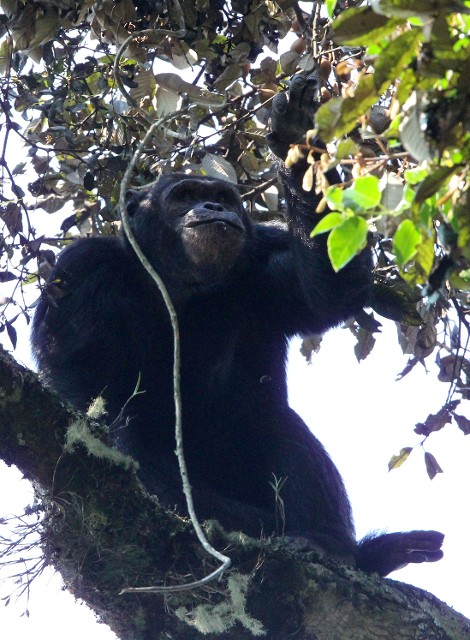
Cokie's Chimpanzee! We were all thrilled to see this group - very unplanned and real. The noises were spectacular.
***
Take a look at our Chimp videos on Youtube!
***
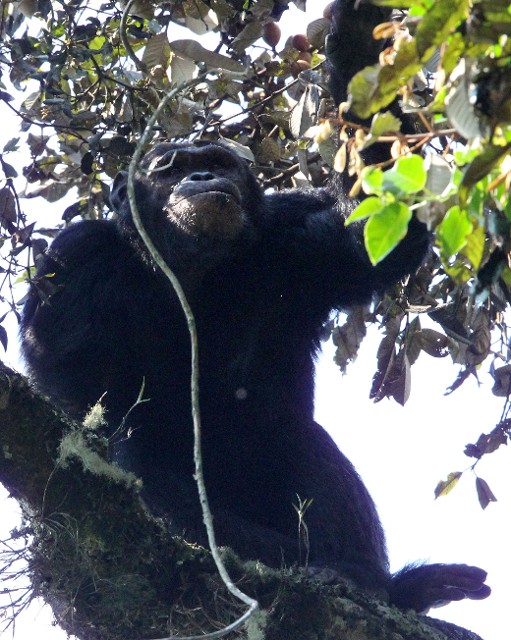
We came across this group after about 10 minutes of walking in to the Oyabudongo Forest!
***
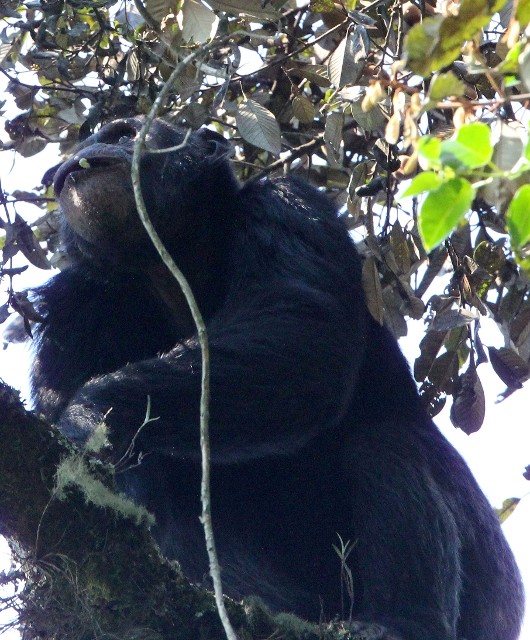
Oyabudongo Chimpanzee...
***
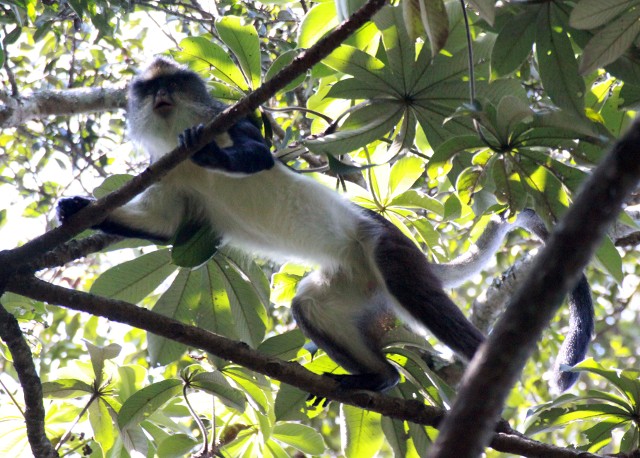
Dent's Mona Monkeys (Cercopithecus denti) were very numerous in the Oyabudongo Forest, once we found them.
***
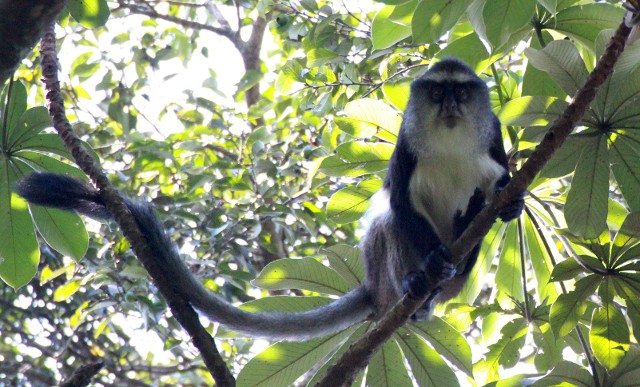
Dent's Mona Monkeys (Cercopithecus denti)
***
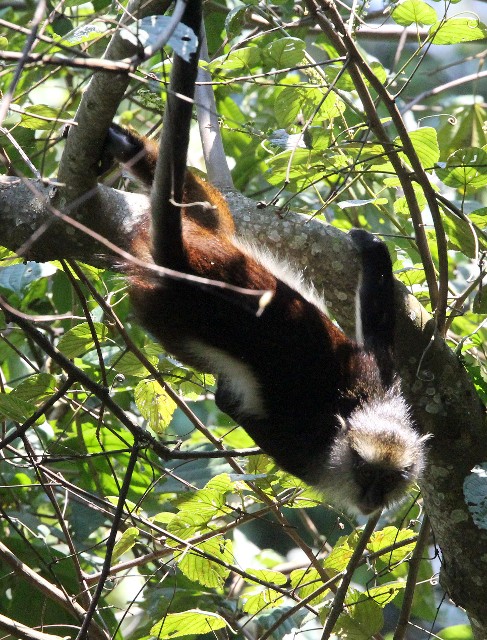
Dent's Mona Monkeys (Cercopithecus denti) taking a good look at us. Cokie said they looked like cats.
***
Along with all of the primates above, we had good looks at several squirrel species and rats (see the list below). And the Olive Baboons at Nyungwe were distinctly different from the same species elsewhere. They had a very grey coat, rather than the yellowish-olive fur found in other areas of east Africa. In fact, the rangers called them “Grey Baboons”. I will do some research and find out more.
"Grey" Baboons of Nyungwe
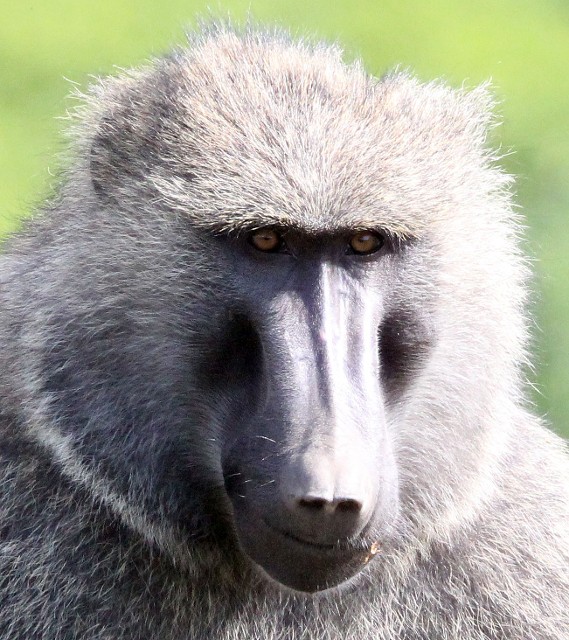
Although they were officially Olive Baboons, their distinctly grey fur made them unique.
***
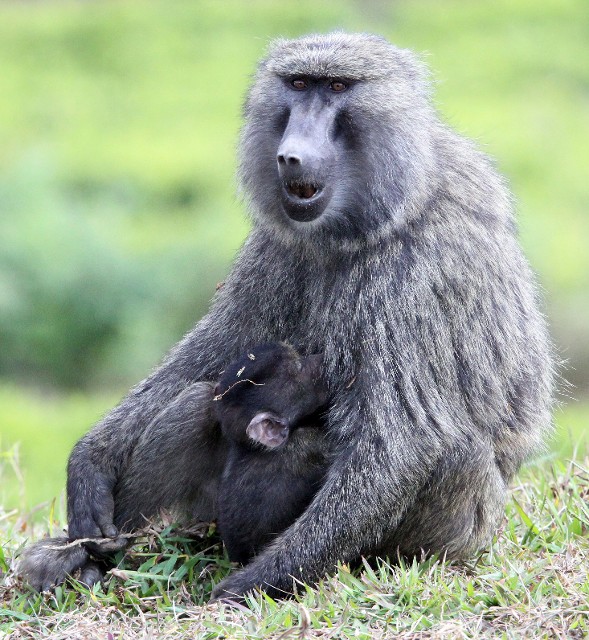
Grey Olive Baboons of Nyungwe...
***
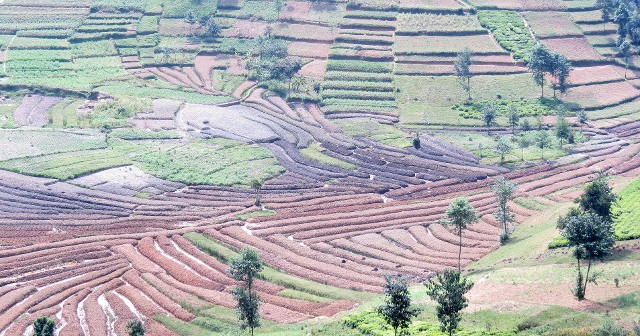
The Rwandan countryside is simply beautiful. Although there is little natural habitat remaining, the rolling hills and terraces near Butare are stunning.
***
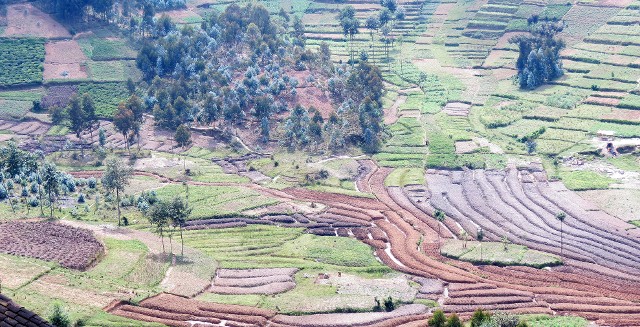
The tea terraces near Butare, Rwanda.
***
We then returned to Kigale for our last afternoon in Rwanda, which was about four hours from Nyungwe. I was shocked once again at how much the place had changed. Now a vibrant and modern African city, there was little that I recognized. But there was one notable exception, the hotel that I stayed at back in the mid ‘90’s. I never knew it but that hotel, which was riddled with bullet holes, broken windows and blood stains on the floors, was the one featured in the movie “Hotel Rwanda”. The city was now alive and nice to be in, whereas before it was a city that had just experienced one of the worst genocides in history. It was nice to see Kigale this way, and now I could file the old memories someplace much, much deeper and hopefully never see them again.
***
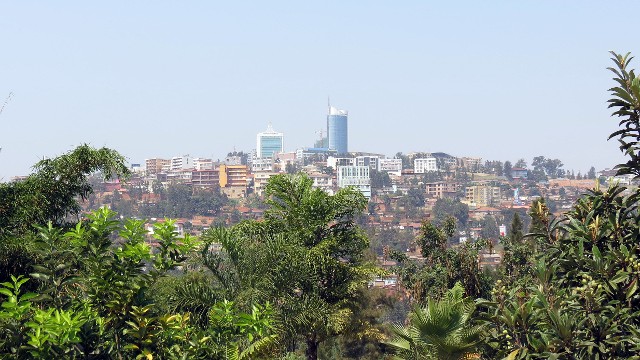
Downtown Kigale
***
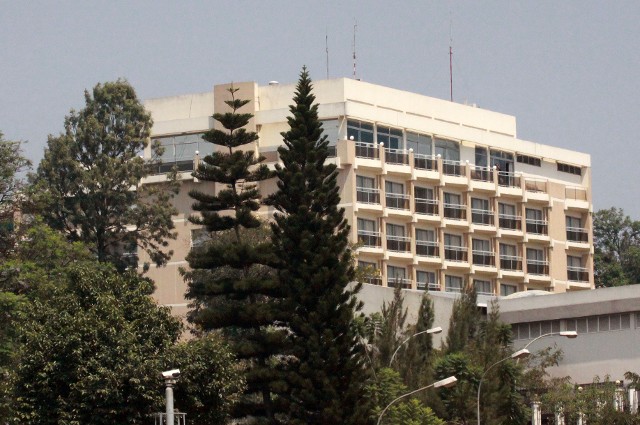
"Hotel Rwanda" The last time I was here, there were virtually no window and bullet holes one the walls and blood-stained carpets....
***
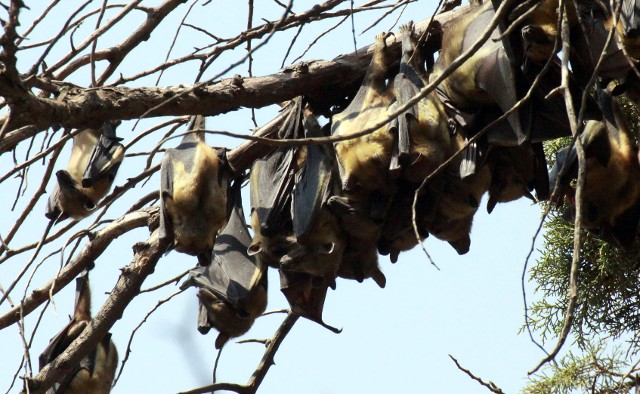
In the trees directly adjacent to the Presidential Palace in Kigale, there were thousands of Straw-colored Bats roosting. Evidently they change trees regularly so if you are interested, basically start looking there.
***
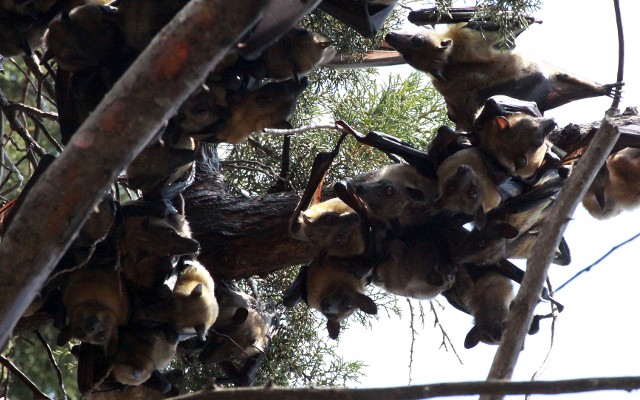
Straw-colored Bats in Kigale.
***
We decided to go to the Genocide Museum. Both Cokie and Som voted for that one, and although it brought back a lot of seriously hard memories for me, I did find it very informative and moving. I learned there that the atrocities that I personally witnessed back in ’96 were not really part of the genocide, but were a wave of revenge-killings that happened all over Rwanda at that point. Although there were some spots in the museum that were a bit too much for me, I was glad we went.
Our time with Gaston was very special. After a couple days of getting to know each other, he started to open up a bit about his being a “survivor”. As we passed certain parts of the country, he shared with us his story. We passed his village, which was once populated with much of his family, most of whom were murdered. We passed another street in a small village where he showed us a house where he hid and basically survived the genocide. Perhaps one of the most moving places he shared with us was a mass grave in the countryside in the southern part of the country, where he told us many of his family were interred. I could tell that talking about his experiences were very difficult for him, and we did not ask too many questions, but I got the impression that he wanted to share certain things, and we all felt that we had grown as people for hearing his experiences.
***
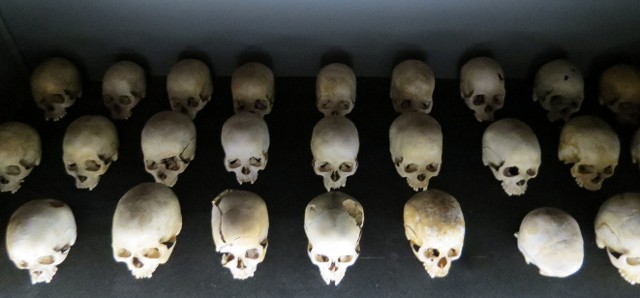
The Rwandan Genocie Museum. One of the more powerful experiences you can have in a lifetime...
***
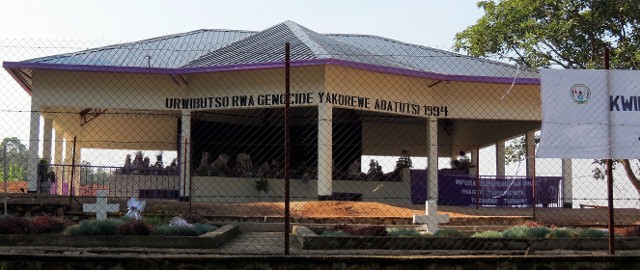
On the way to Kigale, we passed by one of the many Genocide memorials in the countryside. This one was home to the remains of many of Gaston's (our driver and guide) family members.
***
Our trip to Rwanda was amazing on many levels. We nailed nearly twenty species of mammals and life changing experiences. Cokie got his chimps and my family got to visit the country I had been rambling on about for years! No longer for Cokie and Som was Rwanda just another set of stories that dad rambles on about. It is real for them. And what’s even better is that they truly loved the place and the people. Now when we hear about Rwanda, I have my two closet friends on this earth to share memories with, and that’s a great feeling!
***
Some More Images of the Critters of Rwanda
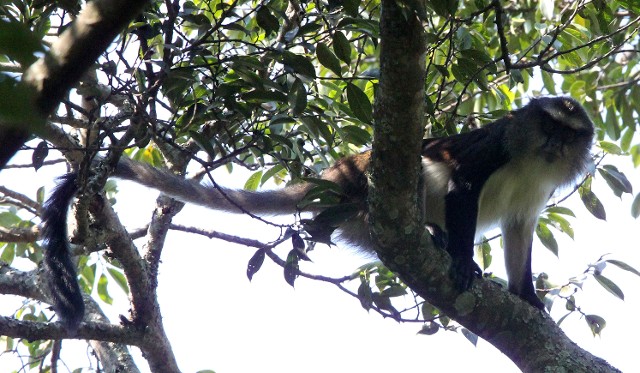
Dent's Mona Monkeys (Cercopithecus denti) in the Oyabudongo Forest of Nyungwe.
***
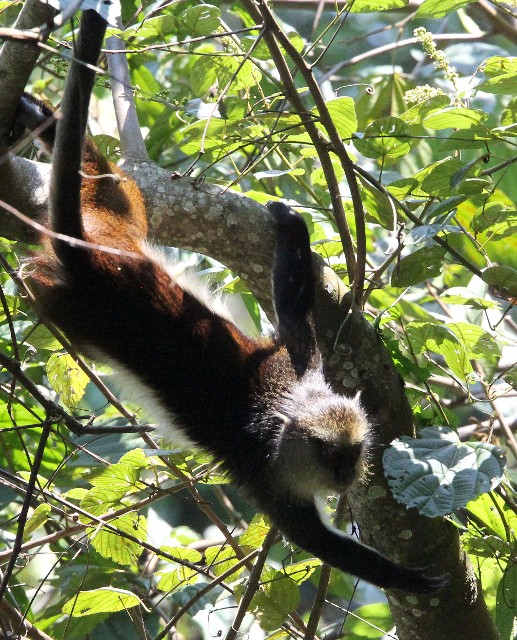
Dent's Mona Monkeys (Cercopithecus denti)
***
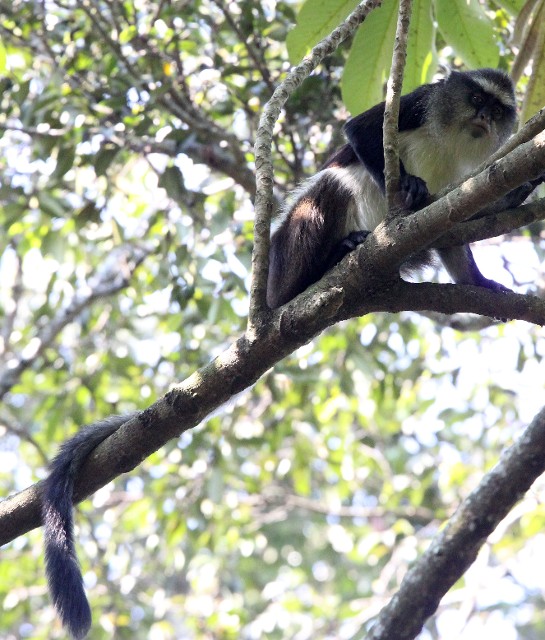
Dent's Mona Monkeys (Cercopithecus denti) in the Oyabudongo Forest of Nyungwe National Park.
***
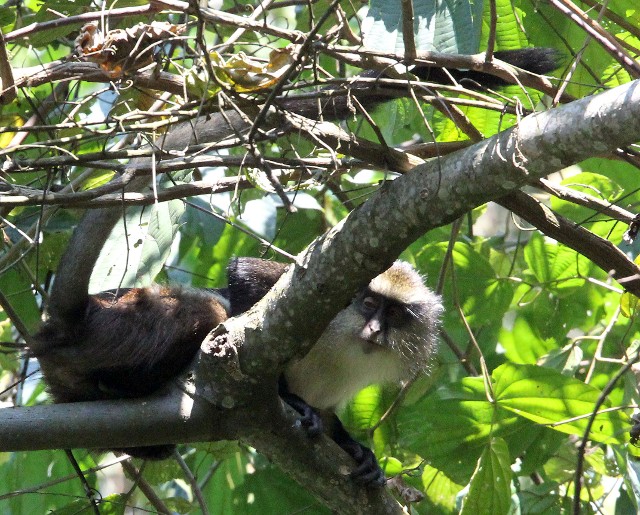
Dent's Mona Monkeys (Cercopithecus denti) in the Oyabudongo Forest of Nyungwe National Park.
***
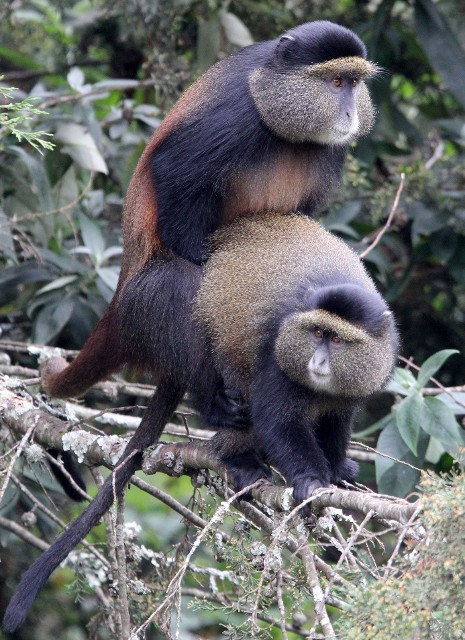
Golden Monkeys having a good morning at Volcanoes National Park.
***
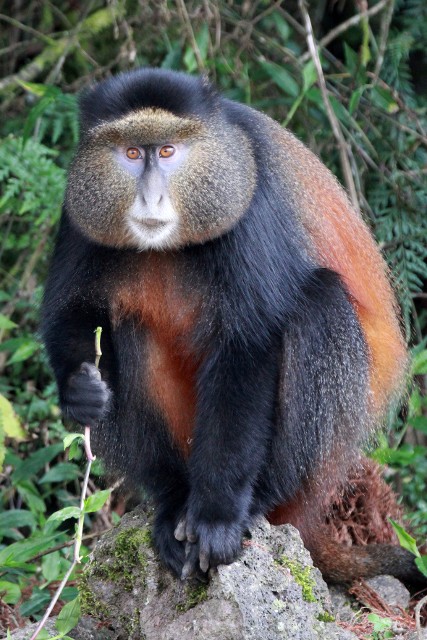
Golden Monkey (Cercopithecus kandti) at Parc des Vulcans.
***
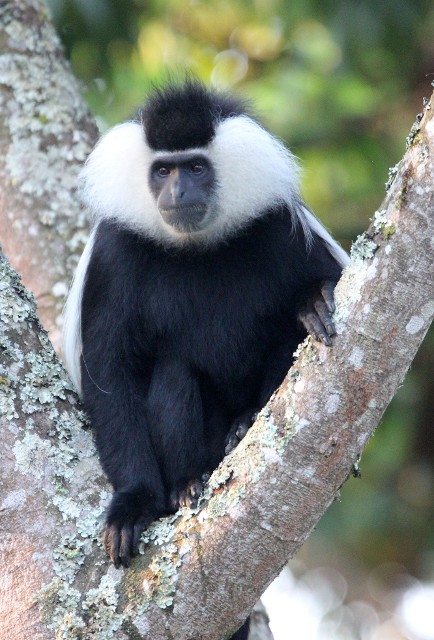
Angolan Black & White Colobus Monkey at Gisakura Tea Estates.
***
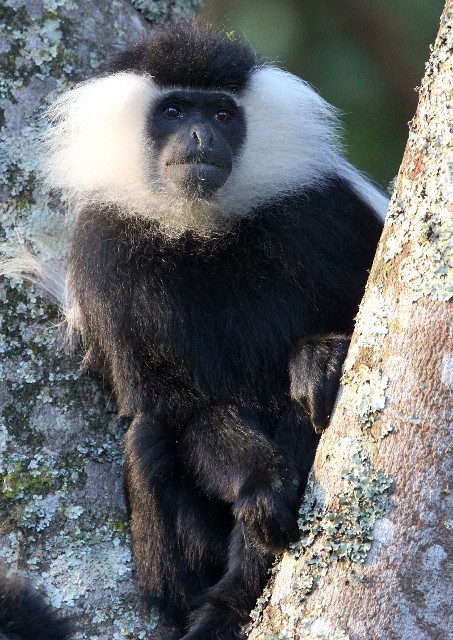
Angolan Black & White Colobus of Nyungwe.
***
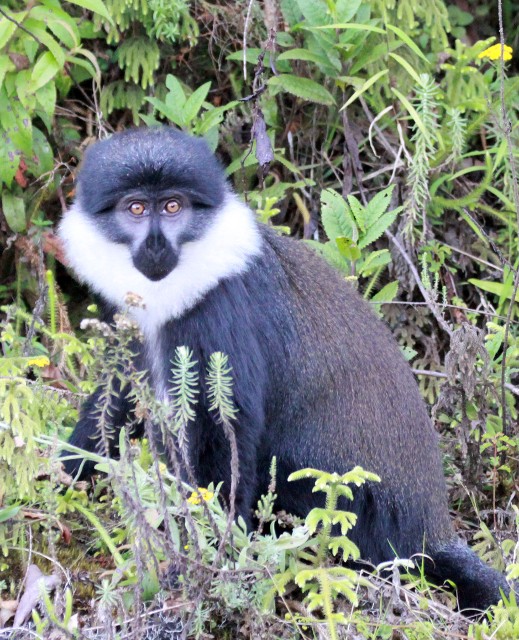
L'Hoest's Monkeys (Cercopithecus l'hoesti) in Nyungwe.
***
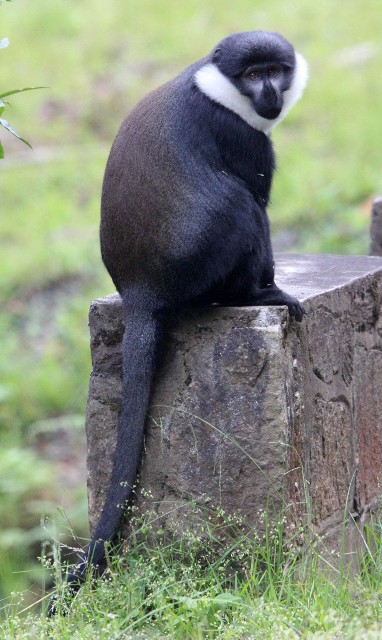
L'Hoest's Monkeys (Cercopithecus l'hoesti) along the road in Nyungwe.
***
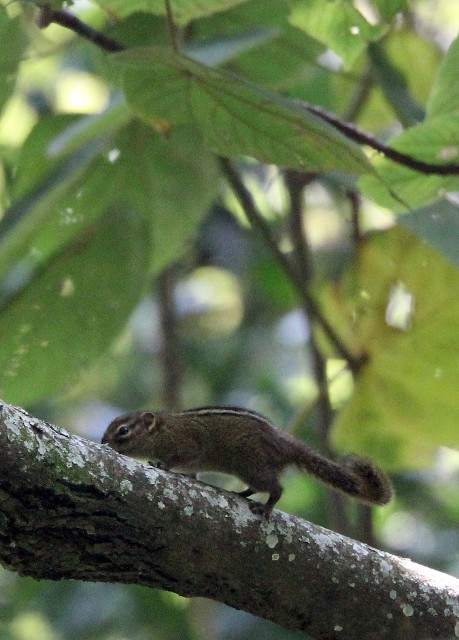
Boehm's Squirrel (Paraxerus boehmi) seen in the African Teak forests of Nyungwe.
***
Mammal List Rwanda
- Slender Mongoose 1
- Buffoon Zebra Mouse (Lemniscomys macula) 1
- Golden Monkey (Cercopithecus kandti) 25
- L’Hoest’s Monkey (Cercopithecus l’hoesti) 50-75
- Mona Monkey (Cercopithecus denti) 25-40
- Red-tailed Monkey/Mona Monkey Hybrid 1
- Rwenzori Angolan Colobus (Colobus angolensis rwenzori) 35
- Chimpanzee 6-8
- Blue (Silver) Monkey (Cercopithecus doggetti) 75+
- Mountain Gorilla (Gorilla gorilla berengei) 9
- Olive Baboon 15
- Dent’s Groove-toothed Rat (Otomys denti) 1
- Rahm’s Brush-furred Rat (Lophurom ys rahmi) 1
- Uranomys Mouse (Uranomys ruddi) 1
- Ruhenzori Sun Squirrel 1-2
- Boehm’s Squirrel 6-8
- African Giant Squirrel 1
- Red-legged Sun Squirrel 2
- Angola Fruit Bat 5-6
- Straw-colored Bat 1500+
Birds of Rwanda, 2012
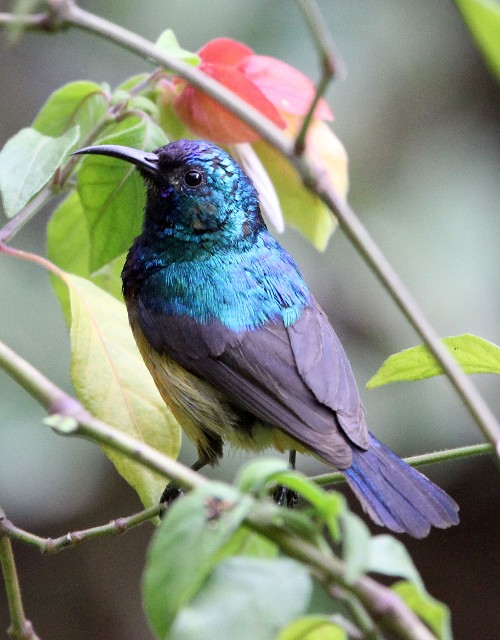
Regal Sunbird in Ruhengeri.
***
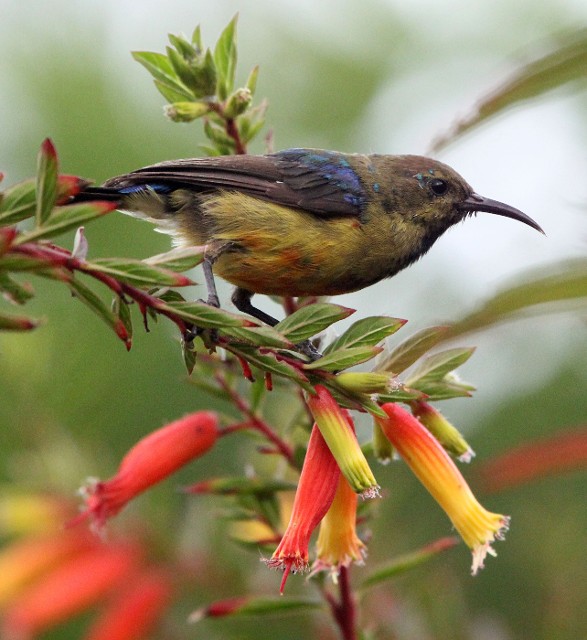
Female Regal Sunbird in Ruhingeri.
***
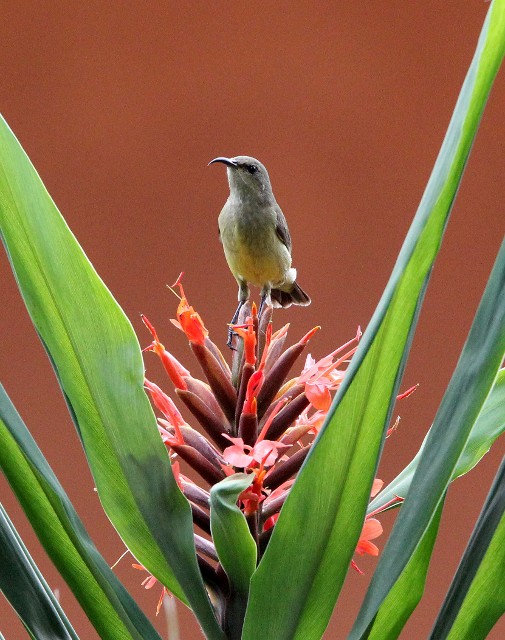
A spectacular Olive Sunbird in Ruhengeri, sunbird central!
***
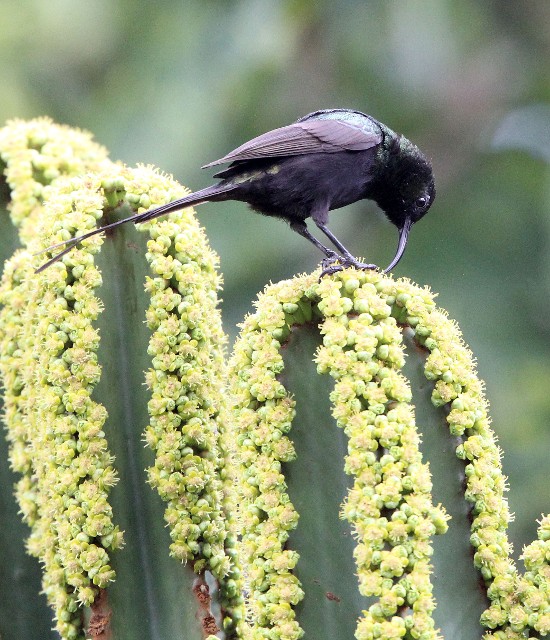
Bronze Sunbird on a blooming Candalabra Euphorbia in Ruhengeri.
***
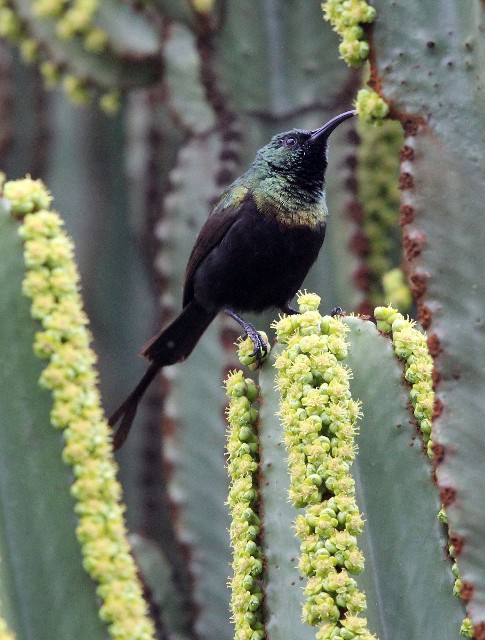
Bronze Sunbird
***
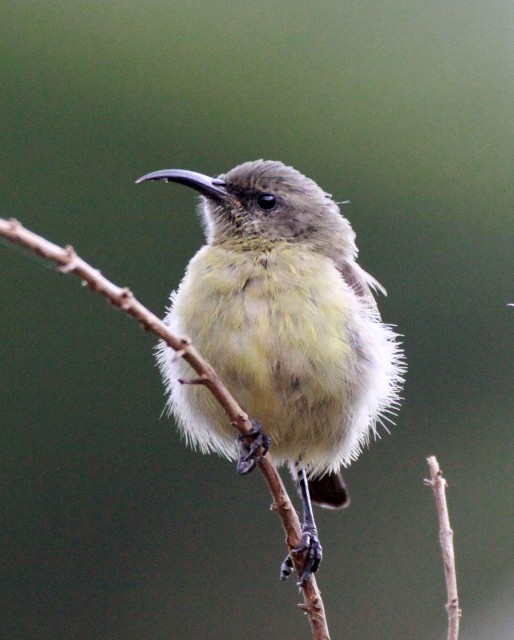
Rwenzori Double-collared Sunbird female at Gisakura Tea Estates.
***
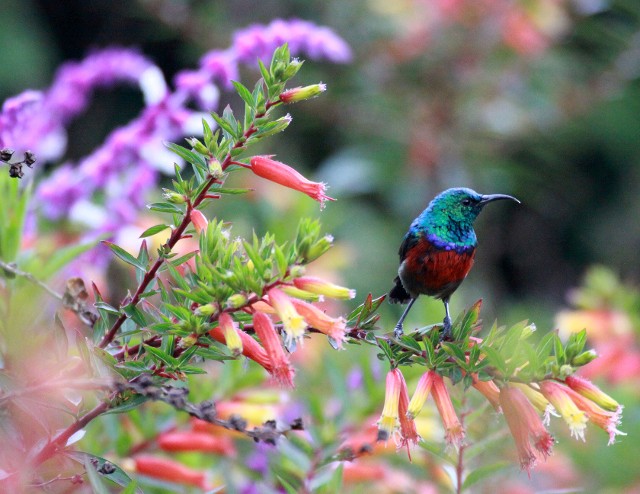
Superb Sunbird at Gisakura Tea Estates.
***
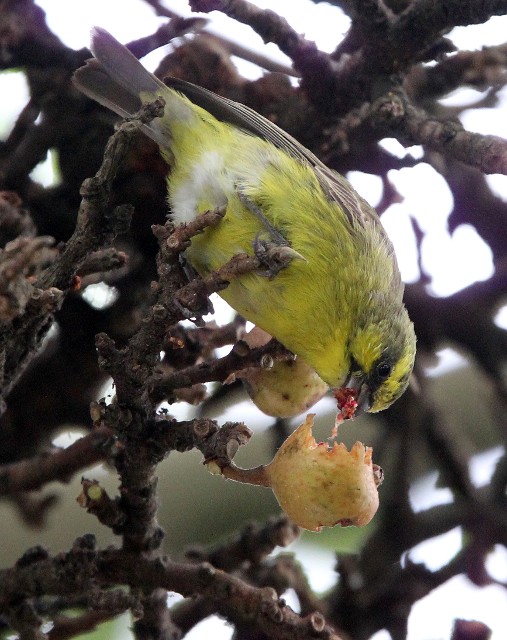
Yellow-crowned Canary at our lodge in Ruhengeri.
***
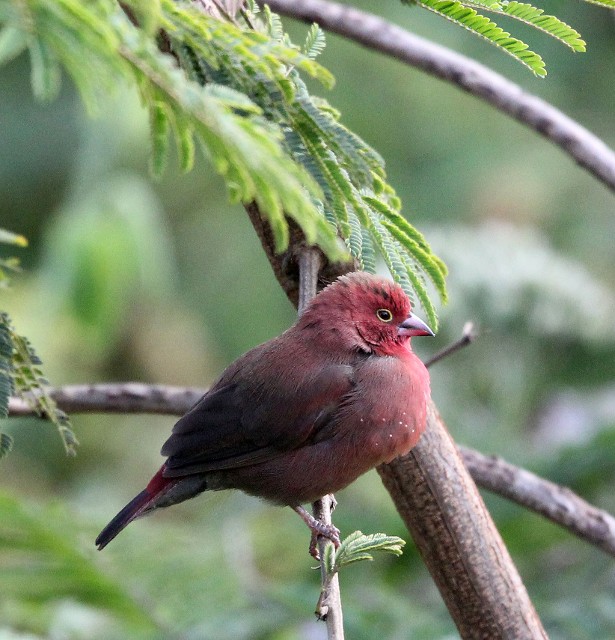
Red-billed Fire-finches were common throughout East Africa.
***
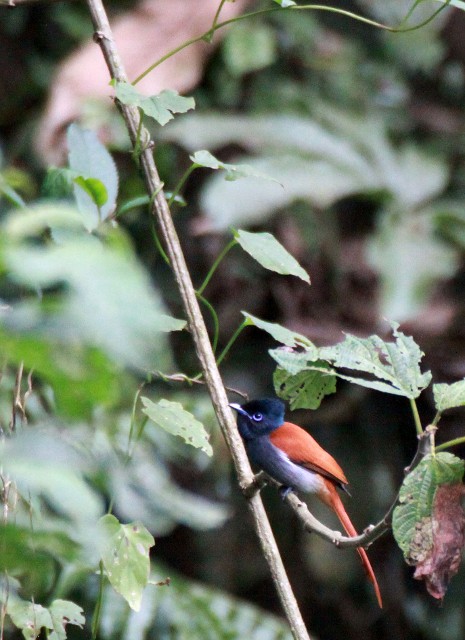
African Paradise Flycatcher in Gisakura Guest House.
***
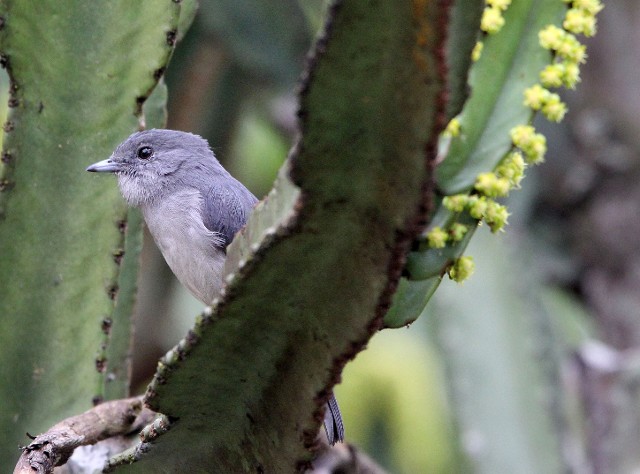
Ashy Flycatcher on a Candalabra Euphorb at Ruhengeri.
***
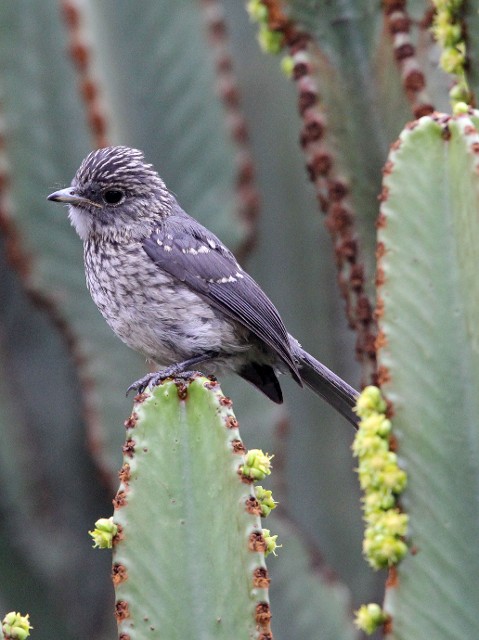
This White-eyed Slaty Flycatcher was a nice addition to the life list.
***
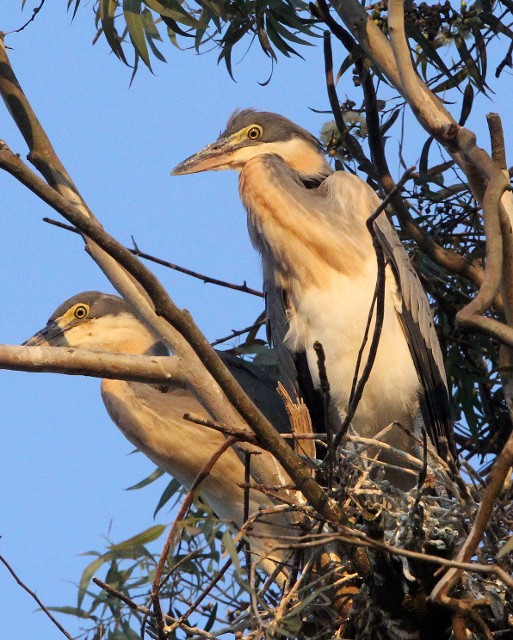
Near Nyungwe, we came across a large Black-headed Heron and Sacred Ibis rookery.
***
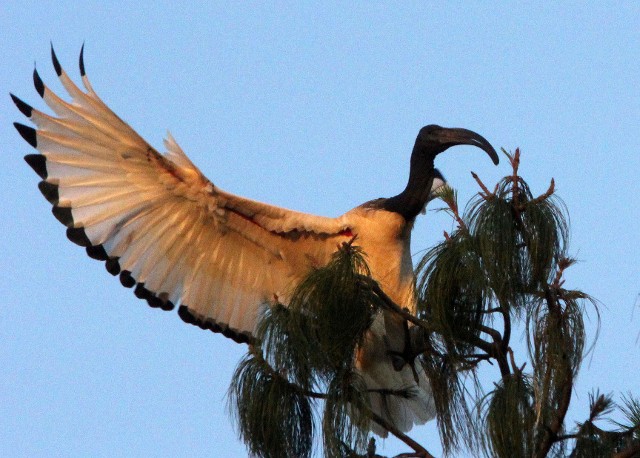
Sacred Ibis coming in to roost in the late afternoon.
***
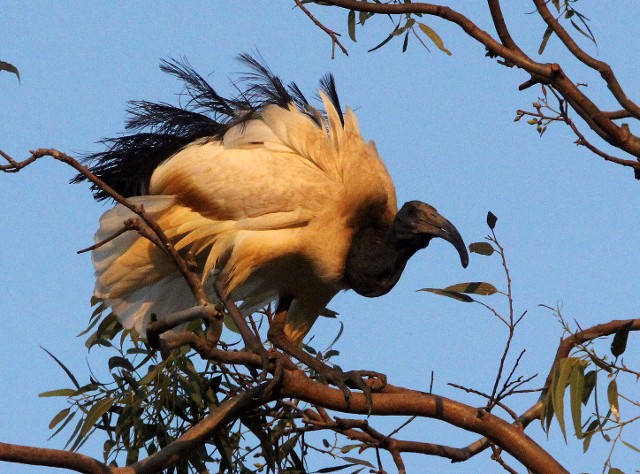
Sacred Ibis outside Nyungwe National Park.
***
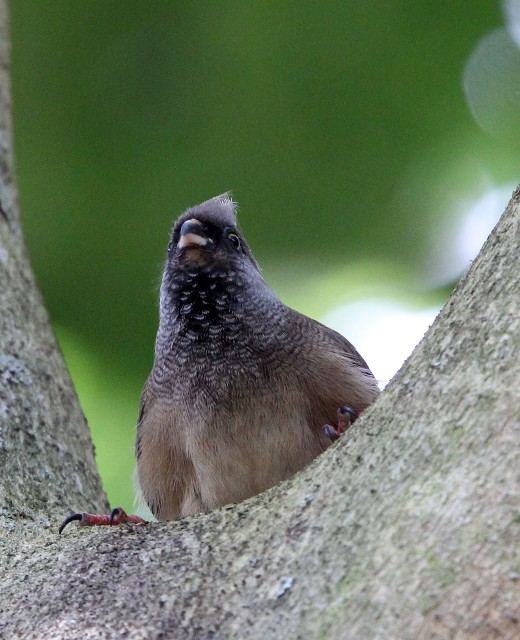
A Speckled Mousebird in our own private garden at the Muhabura Lodge in Ruhengeri.
***
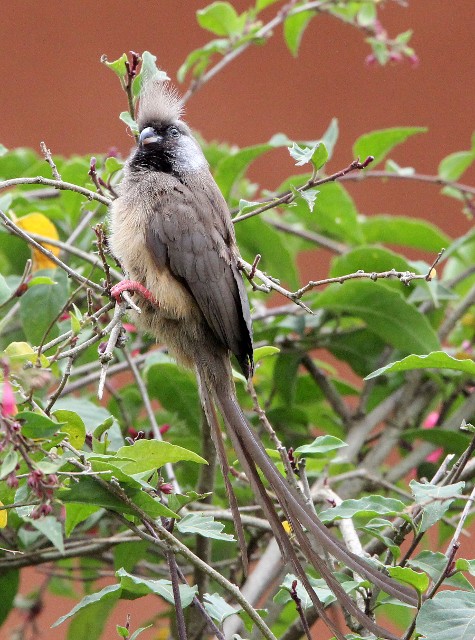
Speckled Mousebird in Ruhengeri.
***
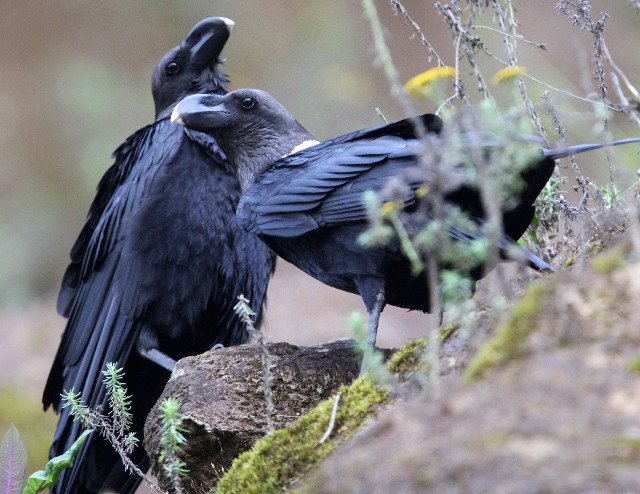
White-naped Raven, Nyungwe National Park.
***
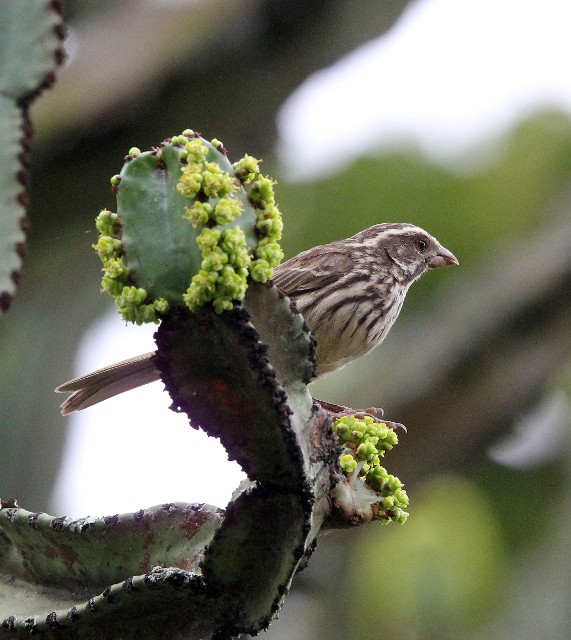
Streaky Seedeater in Ruhengeri.
***
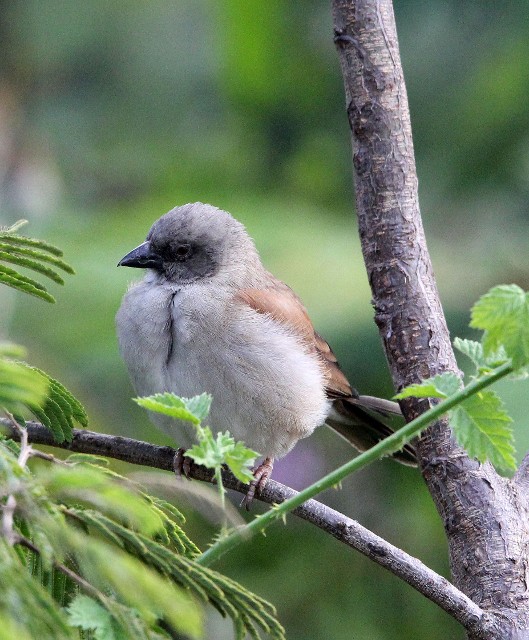
I have no idea what this one is. Nice bird, though.
***
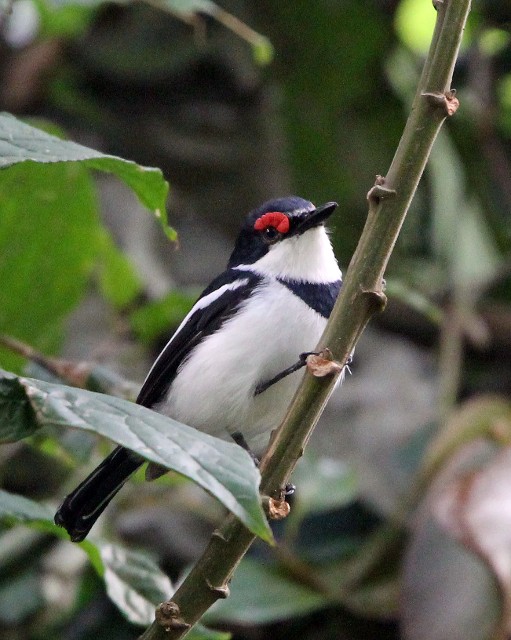
Black-throated Wattle-eye in Gisakura forest gallery.
***
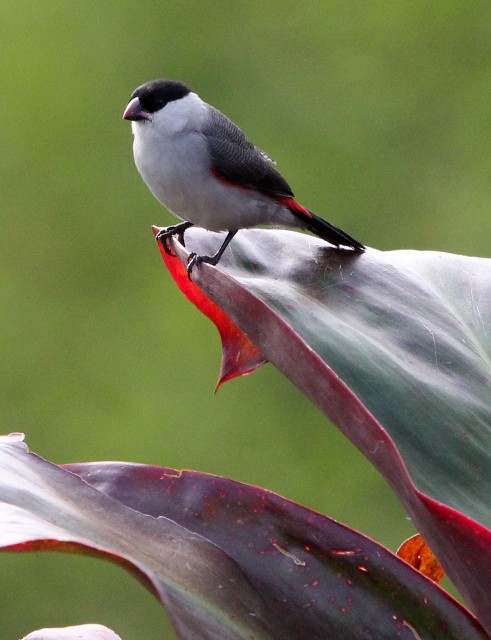
Black-crowned Waxbill in the garden of the Virunga Safari Lodge.
***
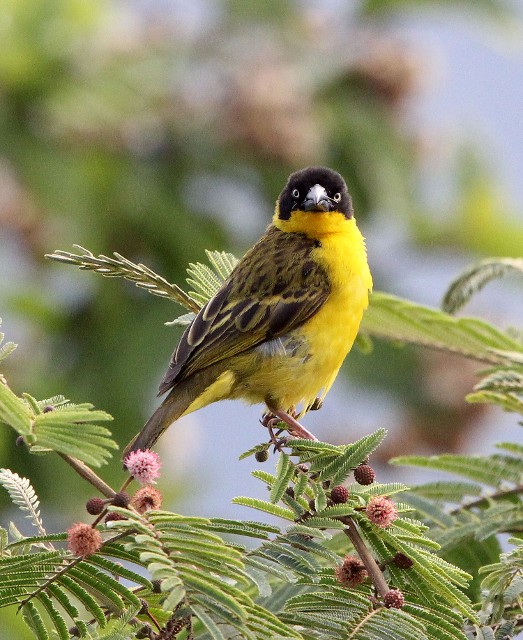
Baglafecht Weavers were very common in Ruhengeri.
***
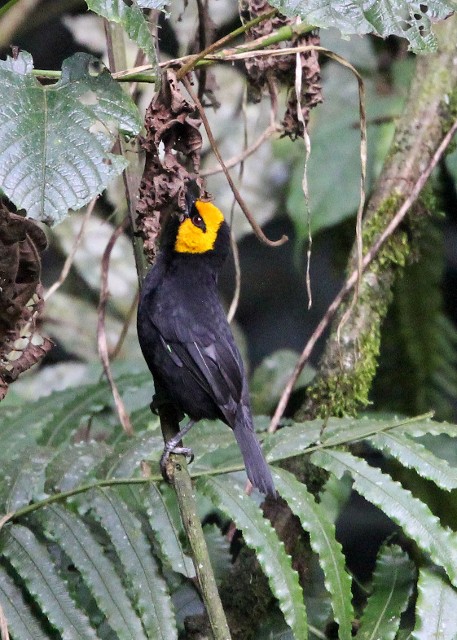
Black-headed Weavers were common and very beautiful in Nyungwe.
***
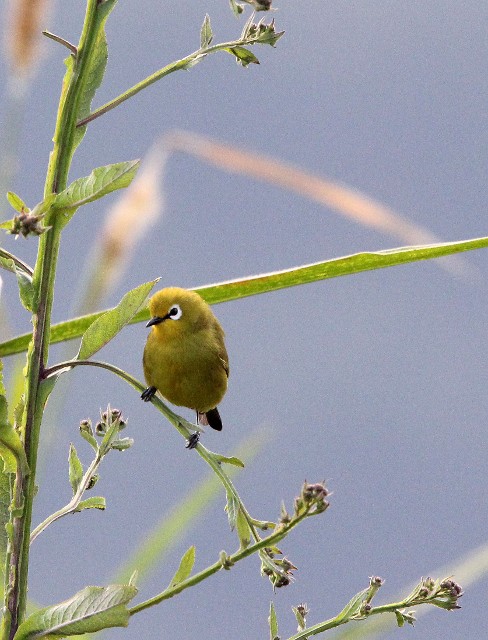
Yellow White-eyes were another common visitor in the gardens of Virunga Safari Lodge.
***
Bird List Kenya, Rwanda and Uganda
- Somali Ostrich
- Common Ostrich
- Great White Pelican
- Pink-backed Pelican
- Little Grebe
- Great Cormorant
- Long-tailed Cormorant
- African Darter
- Black-crowned Night Heron
- Cattle Egret
- Little Egret
- Intermediate Egret
- Goliath Heron
- Great Egret
- Grey Heron
- Squacco Heron
- Striated Heron
- Black-headed Heron
- Hamerkop
- Yellow-billed Stork
- African Open-billed Stork
- Marabou Stork
- Shoebill Stork
- Sacred Ibis
- Hadada Ibis
- Glossy Ibis
- Lesser Flamingo
- African Spoonbill
- Egyptian Goose
- Spur-winged Goose
- Knob-billed Duck
- White-faced Whistling Duck
- Fulvous Whistling Duck
- Black Kite
- Ruppell’s Griffon Vulture
- African White-backed Vulture
- Hooded Vulture
- African Fish Eagle
- Palm Nut Vulture
- Egyptian Vulture
- Lappet-faced Vulture
- Black-chested Snake Eagle (Circaetus pectoralis)
- Brown Snake Eagle (Circaetus cinereus)
- Gabar Goshawk (Micronisus gabar)
- African Goshawk (Accipiter tachiro)
- Little Sparrowhawk (Accipiter minullus)
- African Harrier-Hawk (Polyboroides typus)
- African Hawk-eagle (Hieraaetus spilogaster)
- Common Buzzard
- Shikra
- Augur Buzzard (Buteo augur)
- Bateleur
- Long Crested Eagle (Lophaetes occipitalis)
- Greater Spotted Eagle
- Martial Eagle
- Tawny Eagle
- Imperial Eagle (Aquila heliaca)
- Common Kestrel
- Pygmy Falcon (Polihierax semitorquatus)
- Helmeted Guineafowl
- Crested Guineafowl
- Vulturine Guineafowl (Acryllium vulturinum)
- Secretary Bird
- Osprey
- White-headed Vulture
- Dark Chanting Goshawk*
- Hildebrandt’s Francolin (Francolinus hildebrandti)
- Scaly Francolin (Francolinus squamatus)
- Crested Francolin (Francolinus sephaena)
- Yellow-necked Spurfowl (Francolinus leucoscepus)
- Red-necked Spurfowl (Francolinus afer)
- Harlequin Quail (Coturnix delegorguei)
- Common Button-quail (Turnix sylvatica)
- Black Crake
- African Jacana
- Common Moorhen
- Red-knobbed Coot
- Grey Crowned Crane
- Denham’s Bustard (Neotis denhami)*
- Kori Bustard
- White-bellied Bustard (Eupodotis senegalensis)
- Black-bellied Bustard*
- Black-winged Stilt
- Spur-winged Lapwing
- African Wattled Lapwing (Vanellus senegallus)
- Crowned Lapwing
- Long-toed Lapwing (Vanellus crassirostris)
- Water Thick-knee (Burhinus vermiculatus)
- Eurasian Thick-knee (Burhinus oedicnemus)
- Rock Pratincole (Glareola nuchalis)
- Black-winged Pratincole (Glareola nordmanni)
- Three-banded Plover (Charadrius tricollaris)
- Common Sandpiper
- Common Black-headed Gull
- Black-faced Sandgrouse (Pterocles decoratus)
- Emerald Spotted Wood-Dove
- African Green-Pigeon
- Ferral Pigeon
- Laughing Dove
- Namaqua Dove
- Ring-necked Dove
- African Mourning Dove
- Brown Parrot (Poicephalus meyeri)
- African Orange-bellied Parrot (Poicephalus rufiventris)
- Great Blue Turaco
- Ross’s Turaco (Musophaga rossae)
- White-crested Turaco (Tauraco leucolophus)
- Bare-faced Go-away-bird (Corythaixoides personata)
- Rwenzori Turaco (Tauraco johnstoni)
- Black-billed Turaco (Tauraco schuetti)
- Eastern Grey Plaintain Eater (Crinifer zonurus)
- White-bellied Go-away-bird
- Common Cuckoo (Cuculus canorus)
- White-browed Coucal (Centropus superciliosus)
- Senegal Coucal (Centropus senegalensis)
- Verreaux’s Eagle Owl (Bubo lacteus)
- African Wood Owl
- Square-tailed Nightjar (Caprimulgus fossii)
- Penant-winged Nightjar* (Macrodipteryx vexillarius)
- Little Swift
- Eurasian Swift
- African Palm Swift (Cypsiurus parvus)
- Speckled Mousebird (Colius striatus)
- Blue-naped Mousebird (Urocolius macrourus)
- Pied Kingfisher
- Grey-headed Kingfisher (Halcyon leucocephala)
- Woodland Kingfisher (Halcyon senegalensis)
- Malachite Kingfisher
- African Pygmy Kingfisher
- Little Bee-eater
- Blue-breasted Bee-eater (Merops variegates)
- White-throated Bee-eater
- European Bee-eater
- Madagascar Bee-eater
- Blue-cheeked Bee-eater (Merops persicus)
- Northern Carmine Bee-eater (Merops nubicus)
- Red-throated Bee-eater (Merops bulocki)
- Lilac-breasted Roller
- Green Wood-hoopoe (Phoeniculus purpureus)
- African Hoopoe
- Red-billed Hornbill
- Eastern Yellow-billed Hornbill
- Von der Decken’s Hornbill (Tockus deckeni)
- African Grey Hornbill
- Crowned Hornbill (Tockus alboterminatus)
- Black-and-white-casqued Hornbill
- White-thighed Hornbill (Bycanistes cylindricus)
- Abyssinian Ground-hornbill (Bucorvus abyssinicus)
- Grey-throated Barbet (Gymnobucco bonapartei)
- Red-and-yellow Barbet (Trachyphonus erythrocephalus)
- Usambiro Barbet (Trachyphonus usambiro)
- d’Arnaud’s Barbet (Trachyphonus darnaudii)
- White-headed Barbet (Lybius leucocephalus)
- Lesser Honeyguide (Indicator minor)
- Greater Honeyguide (Indicator indicator)
- Cardinal Woodpecker (Dendropicos fuscescens)
- Rufous-naped (Mirafra africana)
- Flappet Lark (Mirafra rufocinnamomea)
- Chestnut-backed Sparrow Lark (Eremopterix leucotis)
- Rock Martin (Hirundo fuligula)
- Plain Martin (Riparia paludicola)
- Sand Martin
- Common House Martin
- Barn Swallow
- Red-rumped Swallow (Hirundo daurica)
- Lesser Striped Swallow (Hirundo abyssinica)
- Wire-tailed Swallow (Hirundo smithii)
- African Pied Wagtail (Motacilla aguimp)
- White Wagtail
- Yellow-throated Longclaw (Macronyx croceus)
- Grassland Pipit (Anthus cinnamomeus)
- Common Bulbul
- Slender-billed Greenbul (Andropadus gracilirostris)
- White-browed Robin-Chat (Cossypha heuglini)
- White-starred Robin (Pogonocichla stellata)
- Common Rock-thrush (Monticola saxatilis)
- Abyssinian Ground-thrush (Zoothera piaggiae)
- Northern Anteater Chat (Myrmecocichla aethiops)
- Common Stonechat
- Northern Wheatear (Oenanthe oenanthe)
- Isabelline Wheatear (Oenanthe isabellina)
- Familiar Chat
- Desert Cisticola (Cisticola aridulus)
- Northern Black Flycatcher (Melaenornis edolioides)
- Black-throated Wattle-eye (Platysteira peltata)
- African Paradise Flycatcher
- Ashy Flycatcher (Muscicapa caerulescens)
- Swamp Flycatcher (Muscicapa aquatica)
- White-eyed Slaty Flycatcher (Melaenornis fischeri)
- Black-lored Babbler (Turdoides sharpie)
- Arrow-marked Babbler (Turdoides jardineii)
- Yellow White-eye (Zosterops senegalensis)
- Bronze Sunbird (Nectarinia kilimensis)
- Green-headed Sunbird (Cyanomitra verticalis)
- Blue-headed Sunbird (Cyanomitra alinae)
- Olive-bellied Sunbird (Cinnyris chloropygia)
- Rwenzori Double-collared Sunbird (Cinnyris stuhlmanni)
- Green-throated Sunbird (Chalcomitra rubescens)
- Regal Sunbird (Cinnyris regia)
- Olive Sunbird (Cyanomitra olivacea)
- Superb Sunbird (Cinnyris superba)
- Marico Sunbird (Cinnyris mariquensis)
- Beautiful Sunbird (Cinnyris pulchella)
- Collared Sunbird (Hedydipna collaris)
- Variable Sunbird (Cinnyris venusta)
- Common Fiscal (Lanius collaris)
- Grey-backed Fiscal (Lanius excubitoroides)
- Lesser Grey Shrike (Lanius minor)
- Northern Puffback (Dryoscopus gambensis)
- Fork-tailed Drongo
- House Crow
- Pied Crow
- White-naped Raven (Corvus albicollis)
- Piapiac (Ptilostomus afer)
- Red-billed Oxpecker
- Yellow-billed Oxpecker
- Golden-breasted Starling (Cosmopsaurus regius)
- Ashy Starling (Cosmopsaurus unicolor)
- Kenrick’s Starling (Poeoptera kenricki)
- Red-winged Starling (Onchoghnathus morio)
- Greater Blue-eared Starling
- Ruppell’s Long-tailed Starling (Lamprotornis purpuropterus)
- Splended Starling
- Violet-backed Starling (Cinnyricinclus leucogaster)
- Superb Starling
- Chestnut Sparrow (Passer eminibey)
- Grey-headed Sparrow (Passer griseus)
- House Sparrow
- African Black-headed Oriole (Oriolus larvatus)
- Speckled-fronted Weaver (Sporopipes frontalis)
- White-browed Sparrow-Weaver (Plocepasser mahali)
- White-headed Buffalo-Weaver (Dinemellia dinemelli)
- Black-headed Weaver
- Lesser-masked Weaver
- Heuglin’s Masked Weaver (Ploceus heugleni)
- Speke’s Weaver (Ploceus spekei)
- Vieillot’s Black Weaver (Ploceus nigerrimus)
- Holub’s Golden Weaver (Ploceus xanthops)
- Yellow-backed Weaver (Ploceus melanocephalus)
- Black-billed Weaver (Ploceus melanogaster)
- Red-billed Quelea
- Red-headed Weaver (Anaplectes rubriceps)
- Red-collared Widowbird (Euplectes ardens)
- Black Bishop (Euplectes gierowii)
- Southern Red Bishop (Euplectes orix)
- Northern Red Bishop (Euplectes franciscanus)
- Red-cheeked Cordon-bleu (Uraeginthus bengalus)
- Red-billed Firefinch (Lagonosticta senegala)
- African Firefinch (Lagonosticta rubricata)
- Common Waxbill (Estrilda astrild)
- Black-faced Waxbill (Estrilda charmosyna)
- Bronze Mannikin (Lonchura cucullata)
- Pin-tailed Whydah (Vidua macroura)
- Yellow-fronted Canary (Serinus mozambicus)
- Yellow-crowned Canary (Serinus canicollis)
- Streaky Seedeater (Serinus striolatus)
- African Golden-breasted Bunting (Emberiza flaviventris)
***
Some More Gorilla Pics!
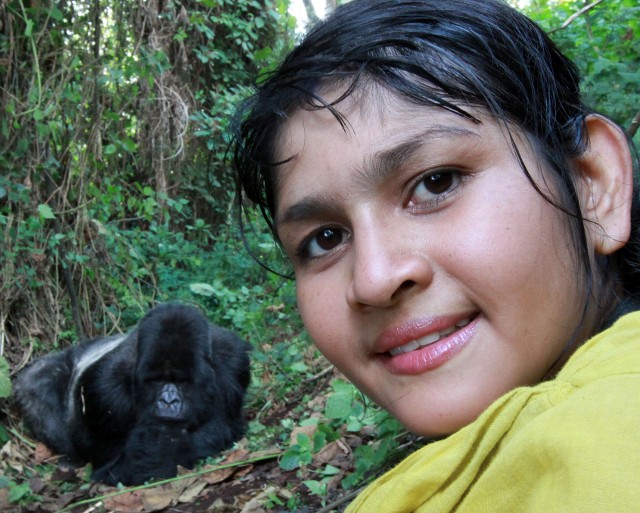
Som and her new best bud...
***
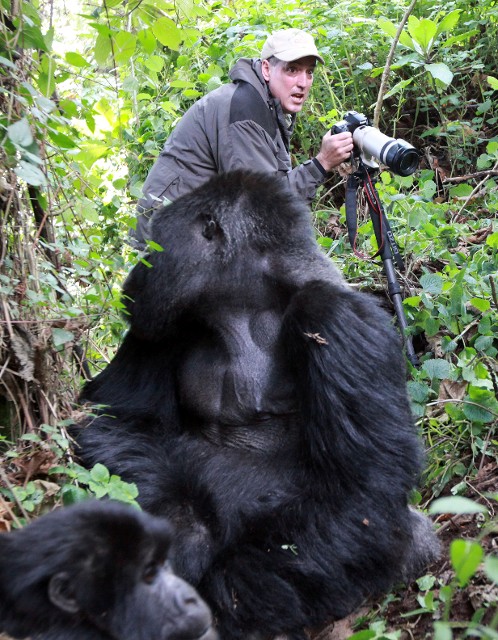
I still can't get over how close they were...
***
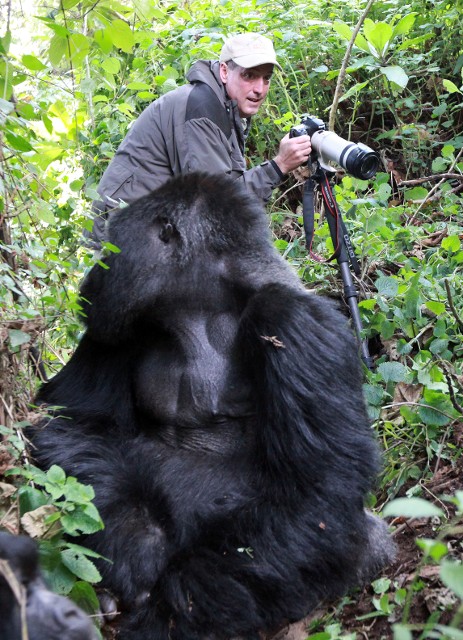
Very Cool!
***
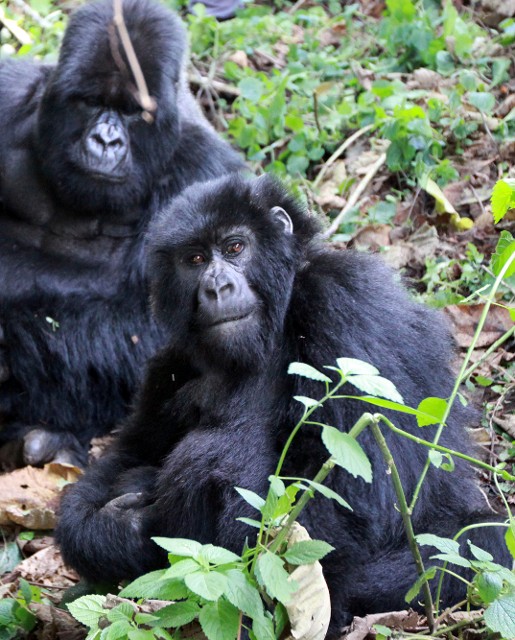
Amahoro family!
***
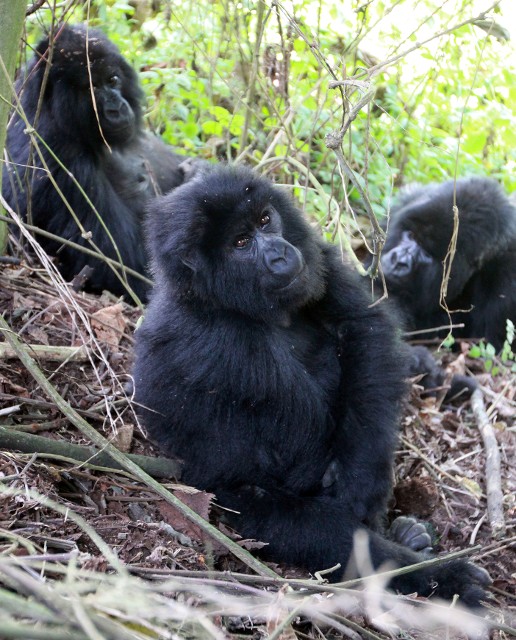
Hello
***
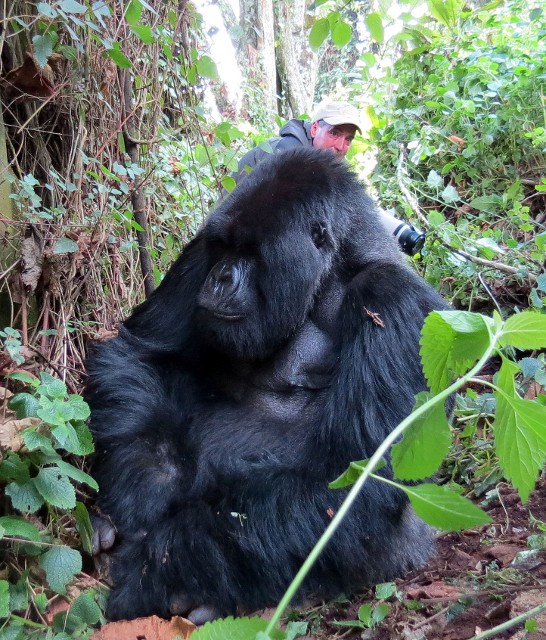
"Hey! Who's behind me?"
***
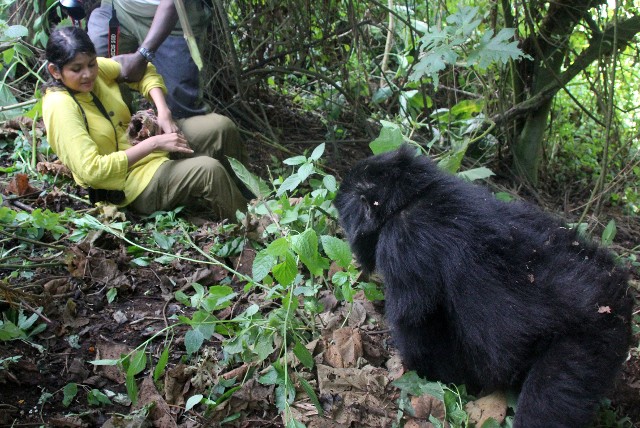
They wanted so bad to play with us, but the trackers did a good job keeping us separate. Basically health concerns for the gorillas are the main reasons for this.
***
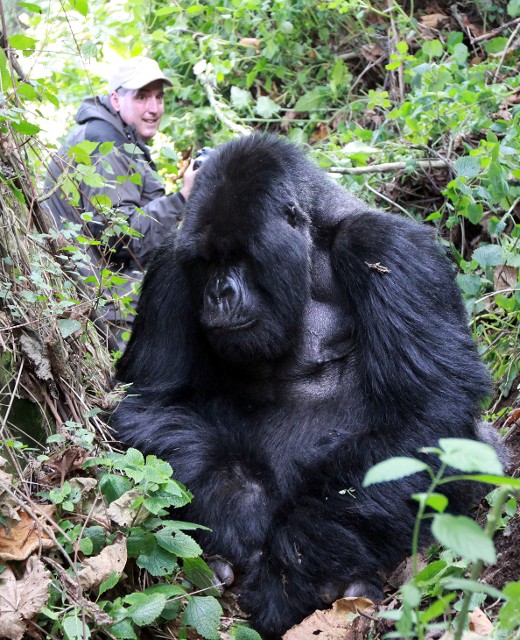
What an amazing day...
***
Other Stuff
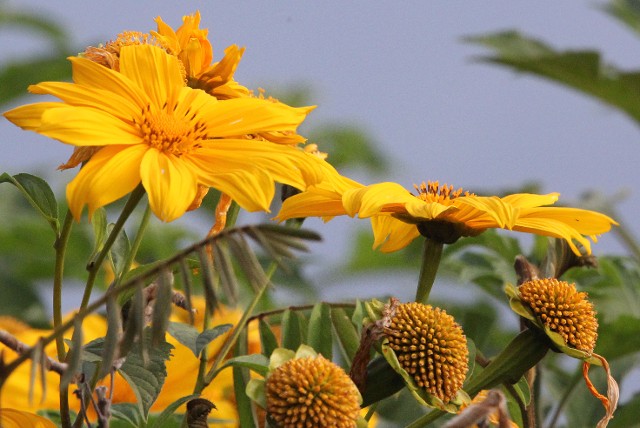
The Virunga Safari Lodge had very nice gardens.
***
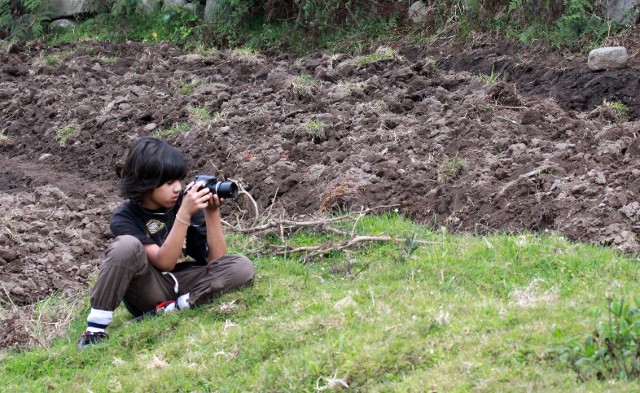
My little photographer. Getting better every day!
***
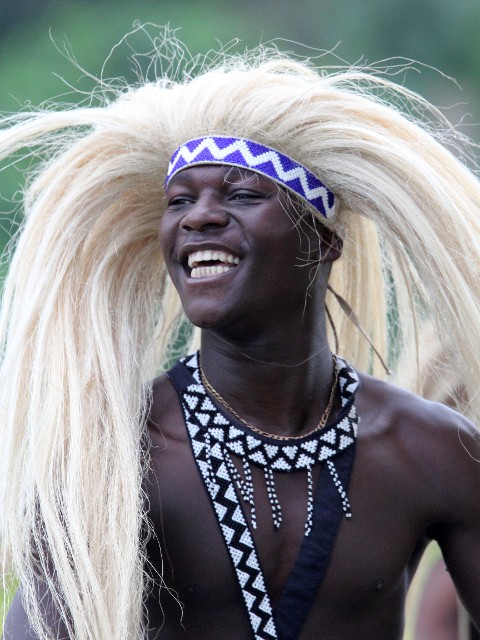
The Sacola Tribe danced for our group the morning of our gorilla trek. Quite impressive actually.
***
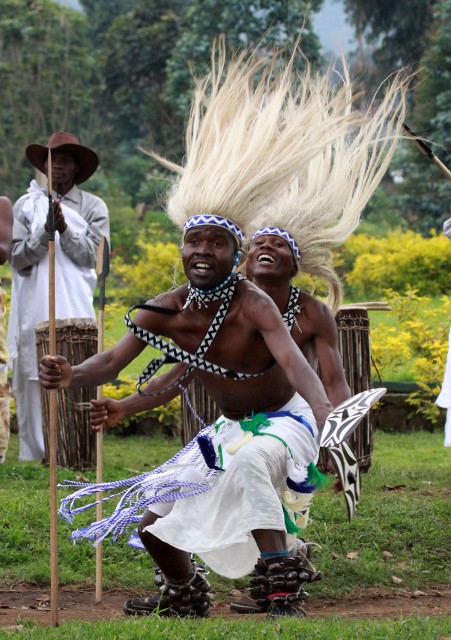
The Sacola Tribe of Ruhengeri.
***
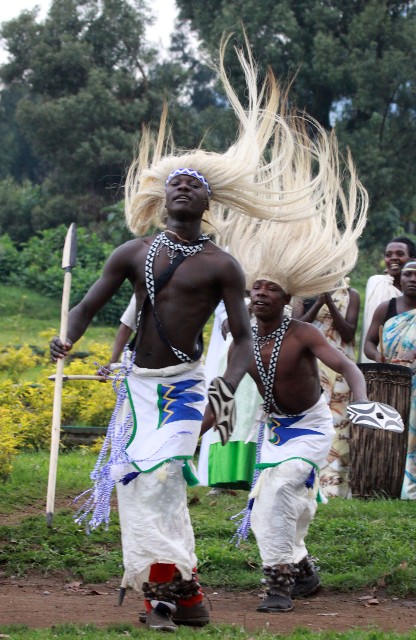
Like a 1970's "hair band"...
***
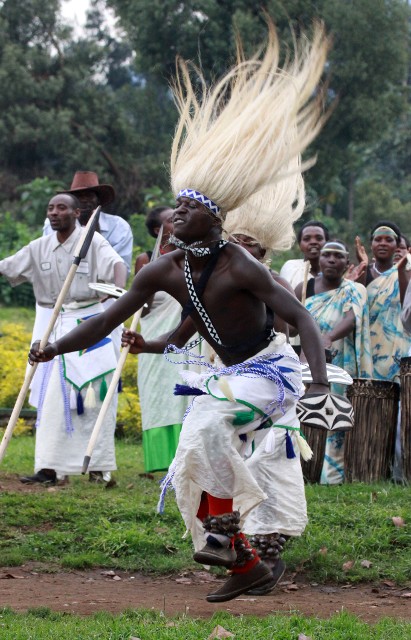
Sacola traditional dance...
***
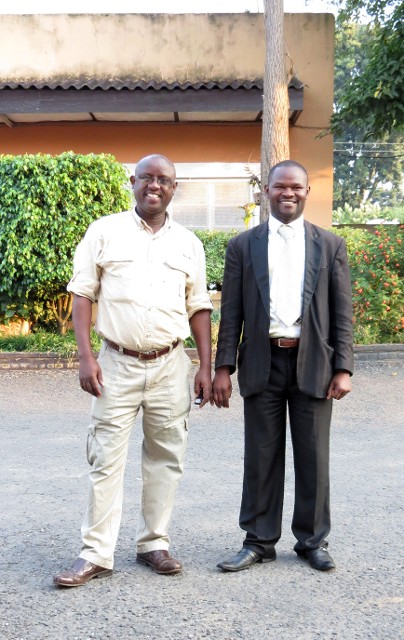
Gaston (on left), our faithful driver and guide.
***
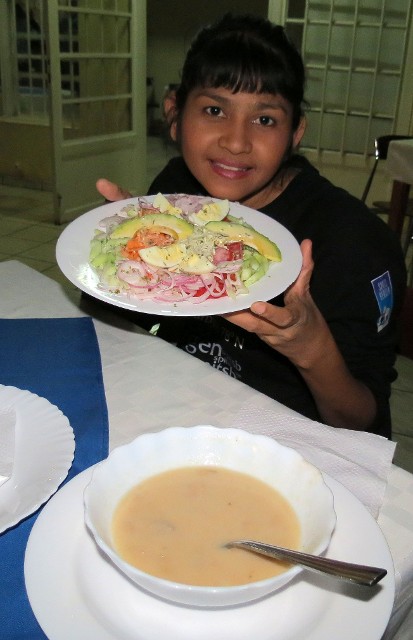
Som enjoying some soup and African Avacado salad in Kigale. We loved the avacado salad throughout Africa!
***
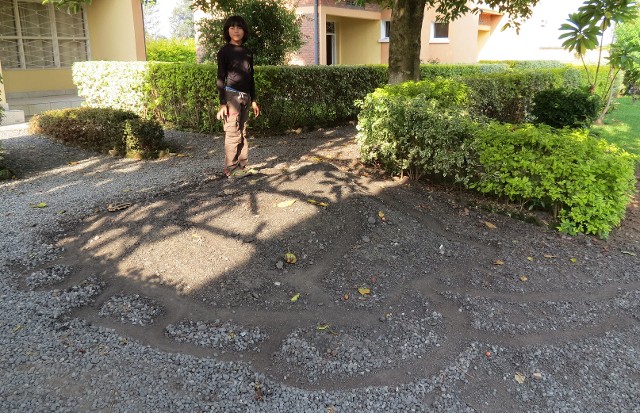
Cokie building his "city" once again. Pretty much everywhere we go, Cokie has left his mark in the form of "cities"...
***
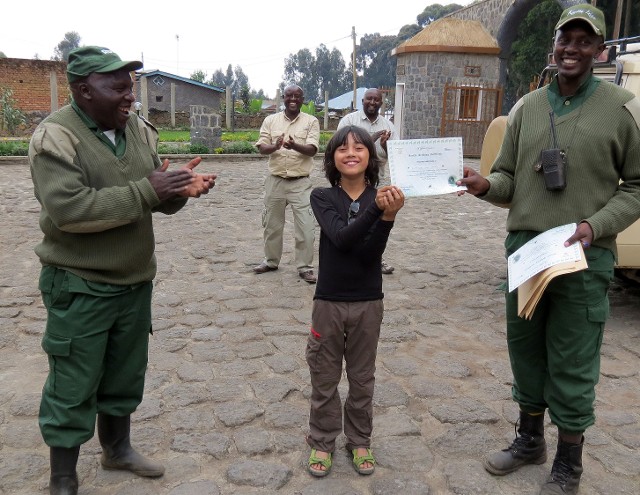
Cokie receiving "his" award for Gorilla trekking. While this certificate was actually mine, he felt he deserved one for actually seeing the Western Lowland Gorillas in CAR a month earlier. I didn't argue much...
***
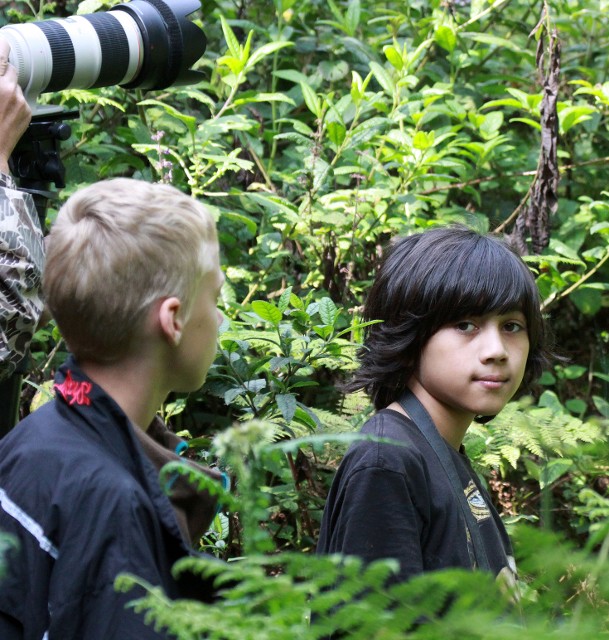
Cokie on our Golden Monkey trek in Parc des Vulcans...
***
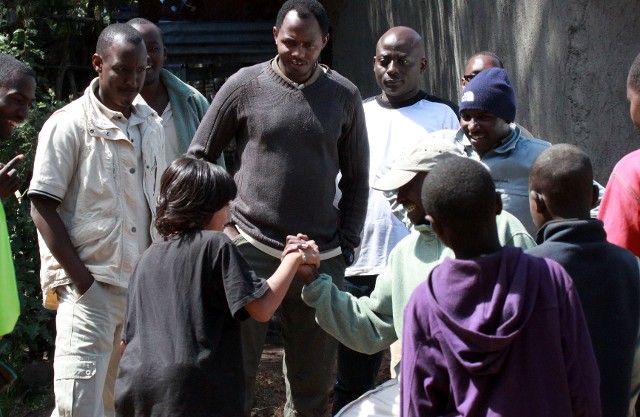
Cokie proving his manliness with some of the guides back at the parking area... No matter where he goes, he makes friends and has fun.
** ***
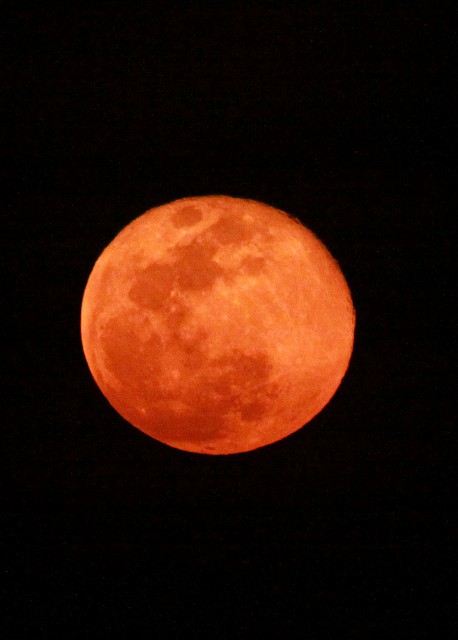
A spectacular Nyungwe moonrise.
***
Check our our Pbase Galleries for more images of Rwanda!
***
Another Trip Report With Good Info On Nyungwe
***
